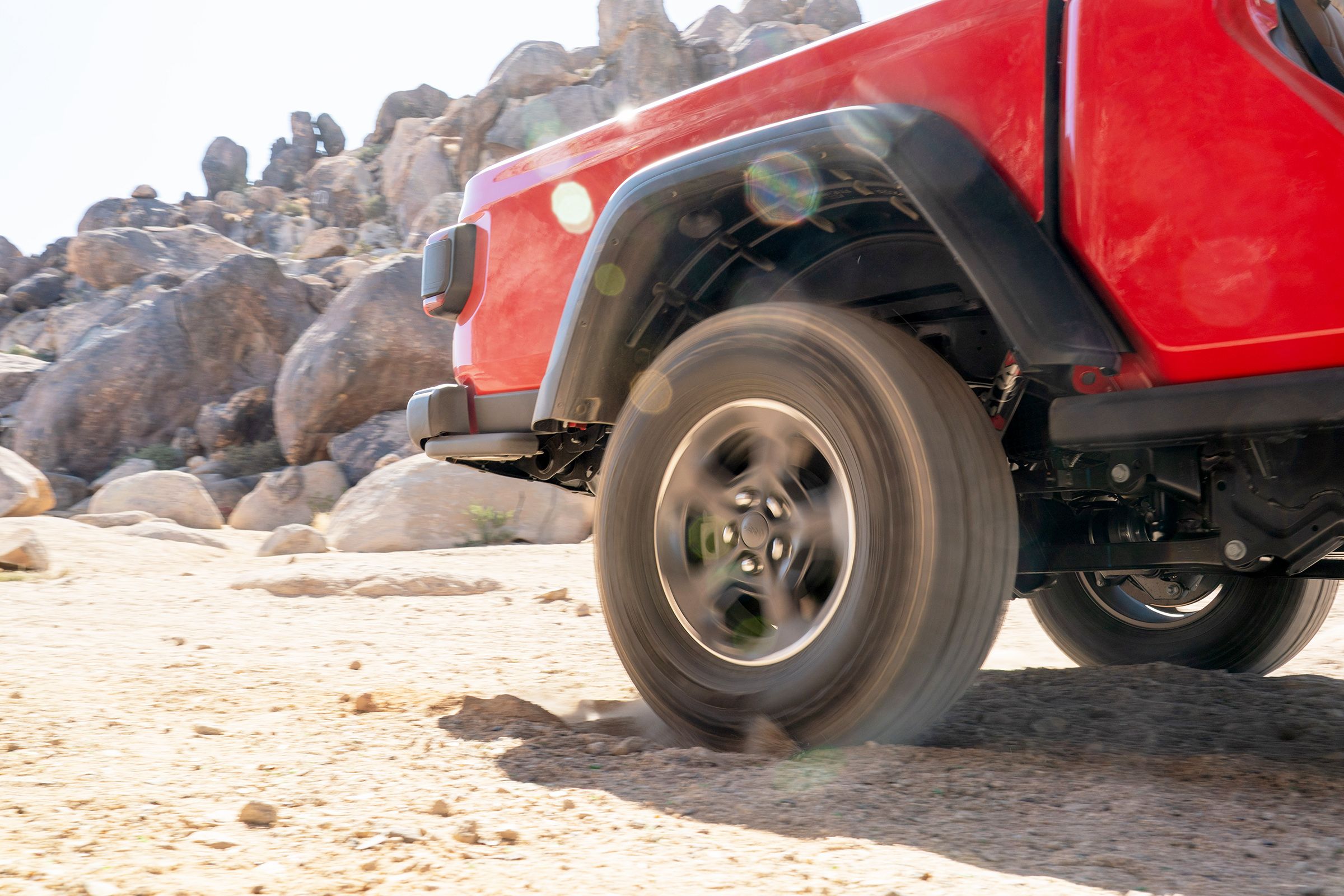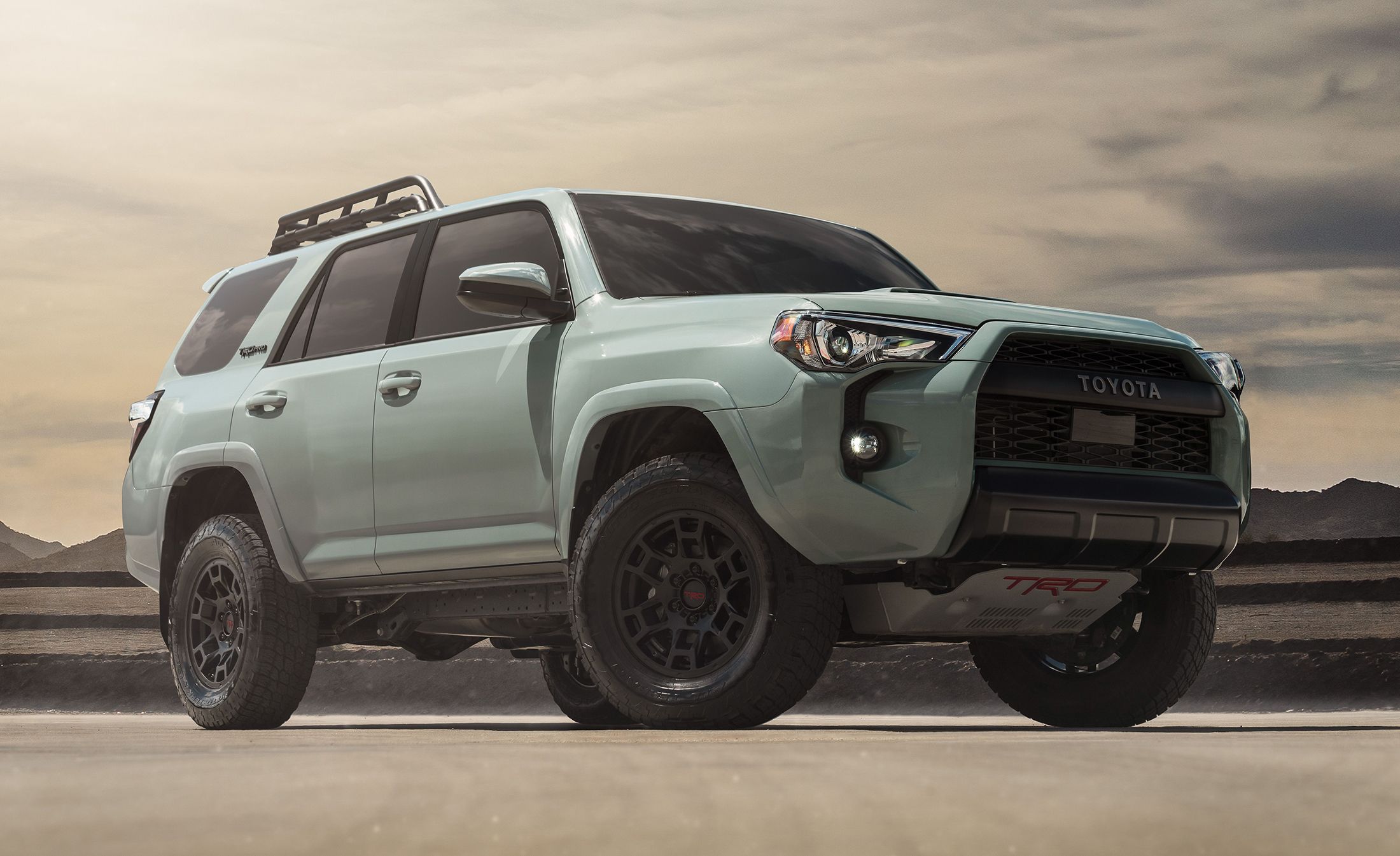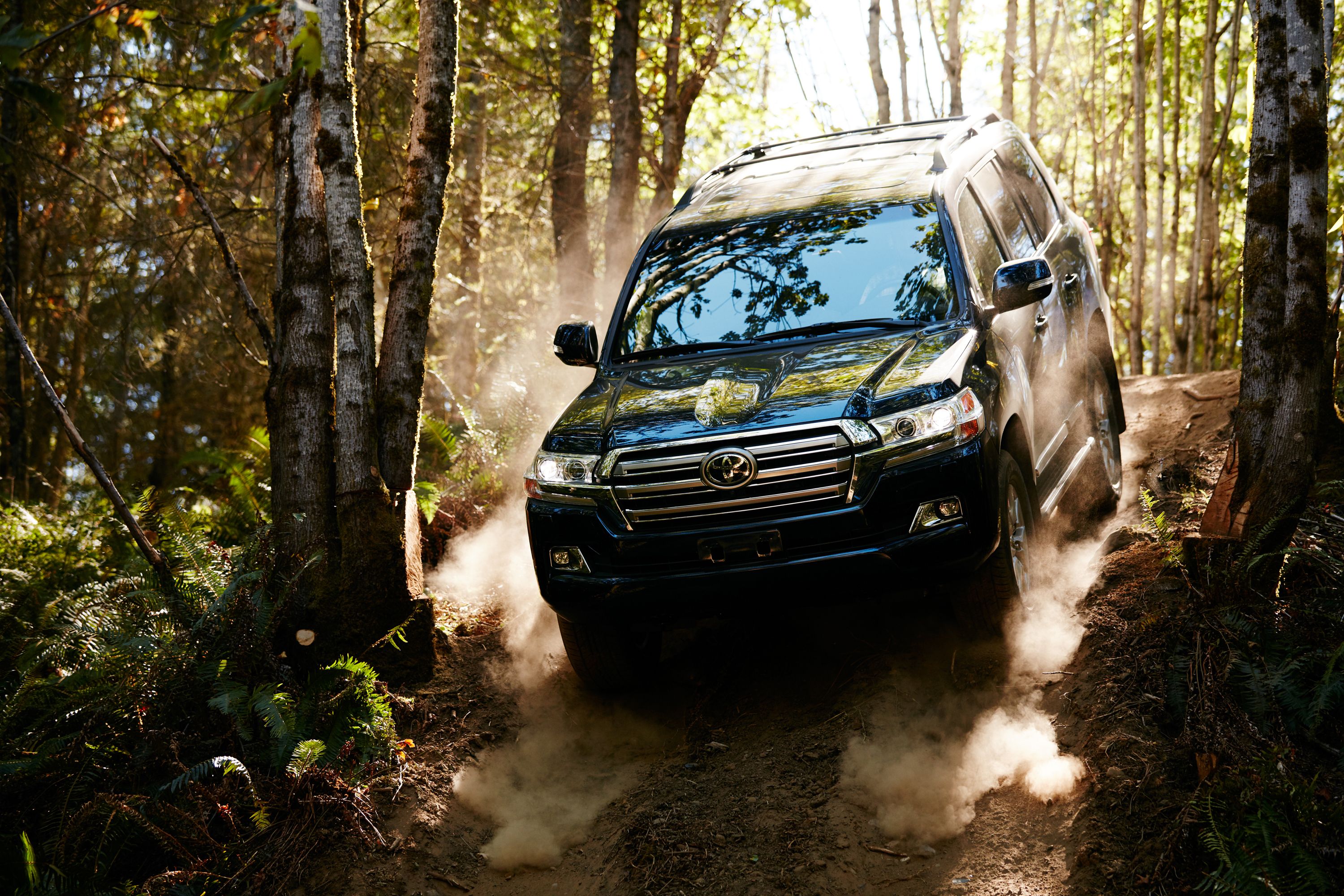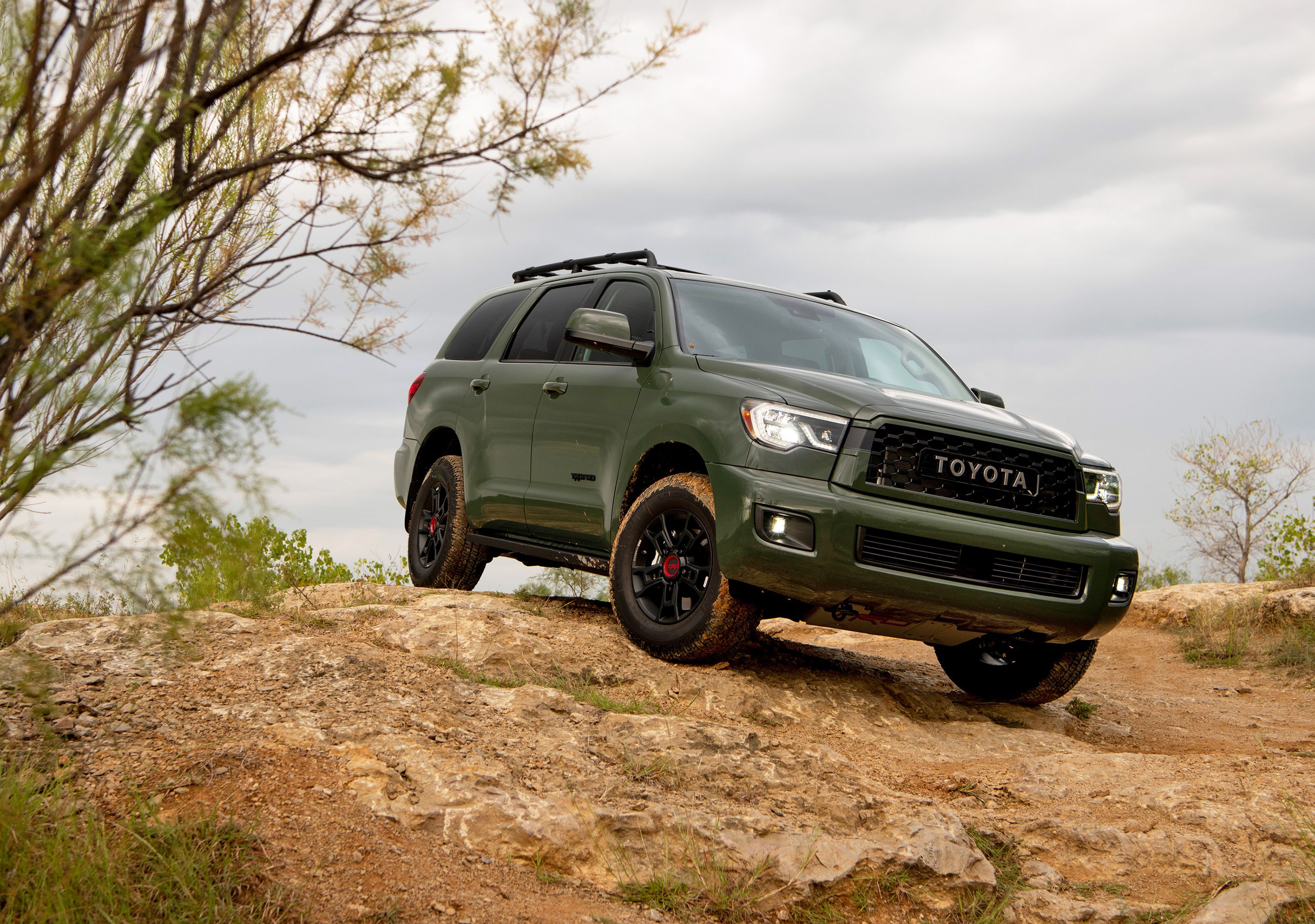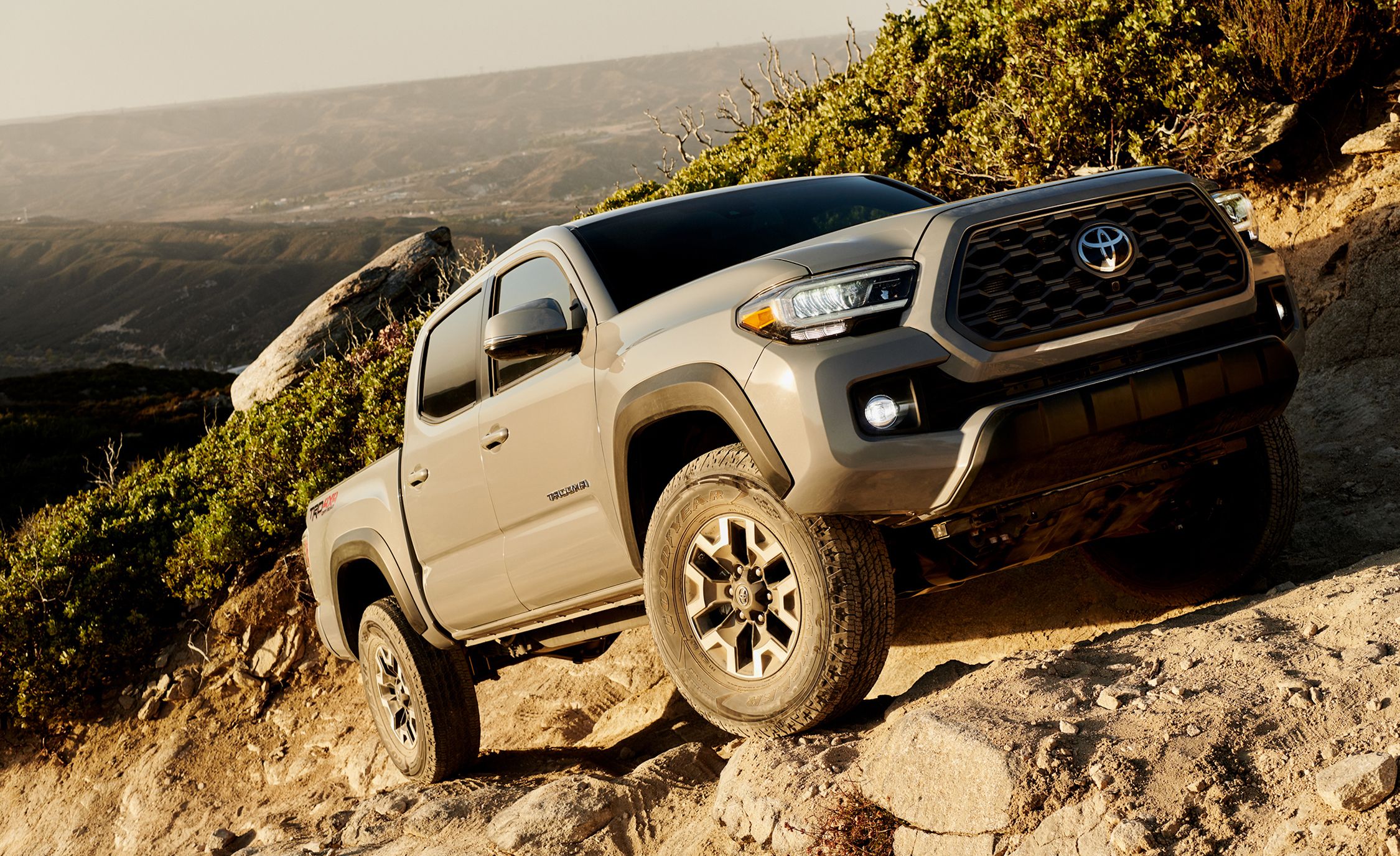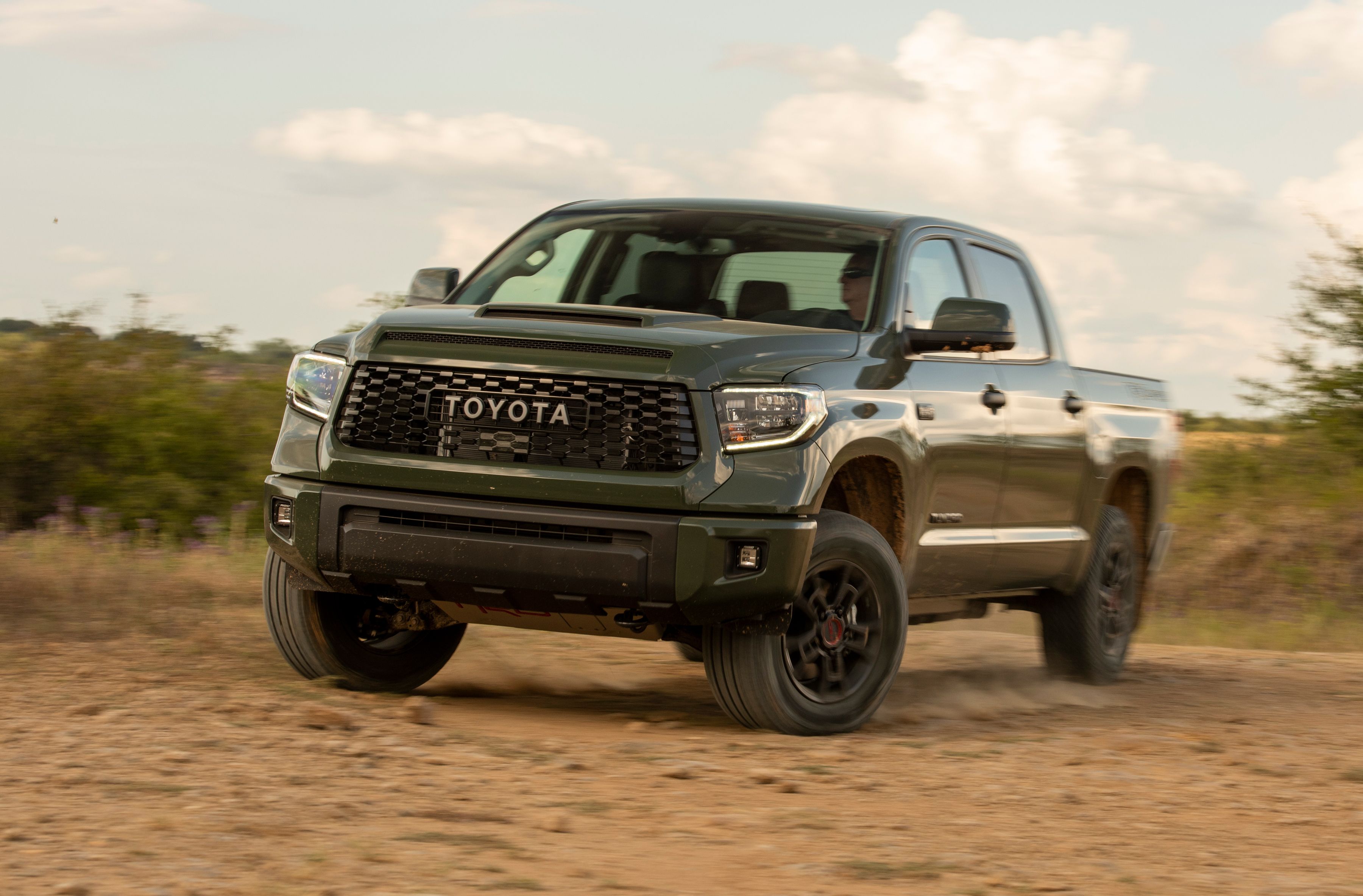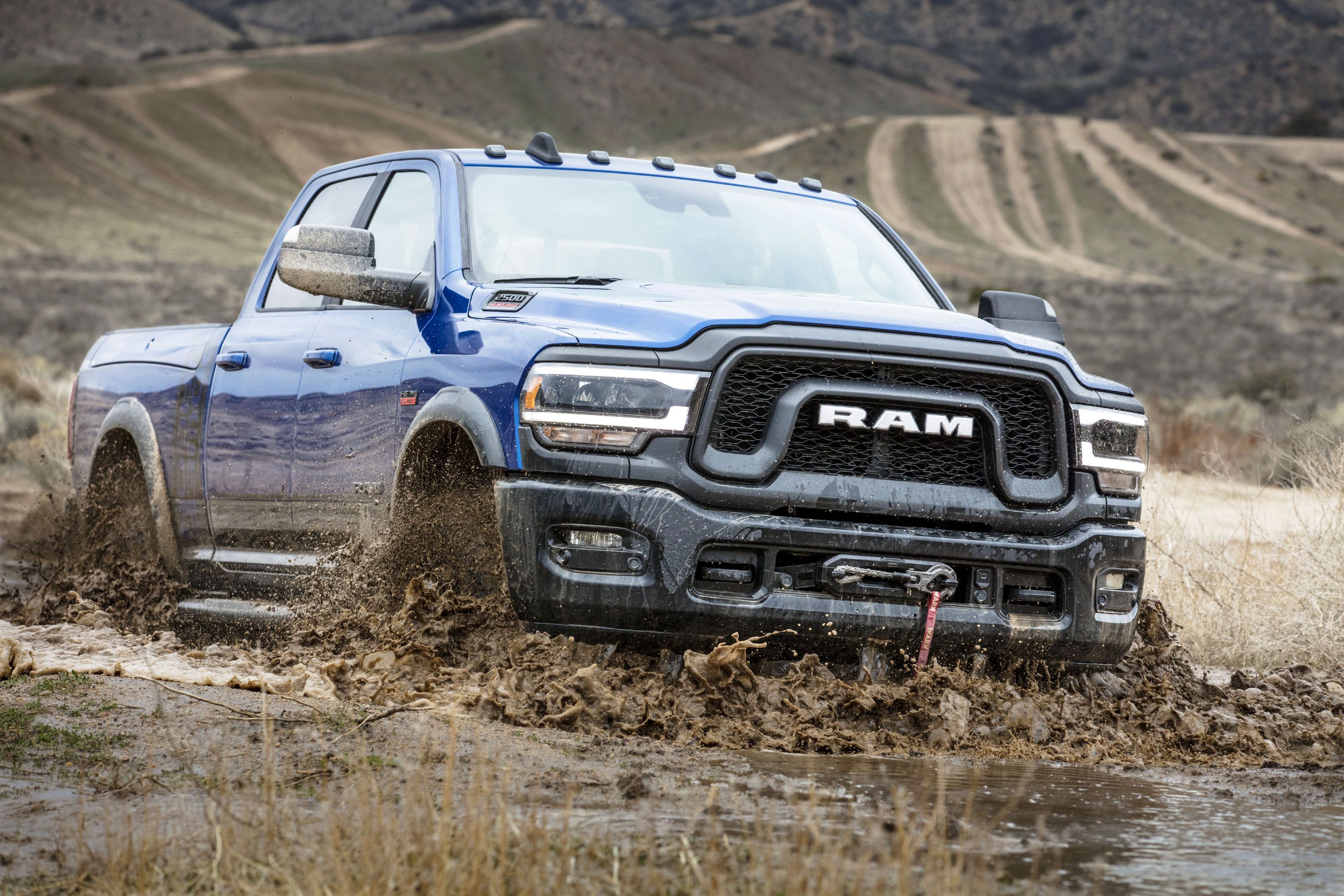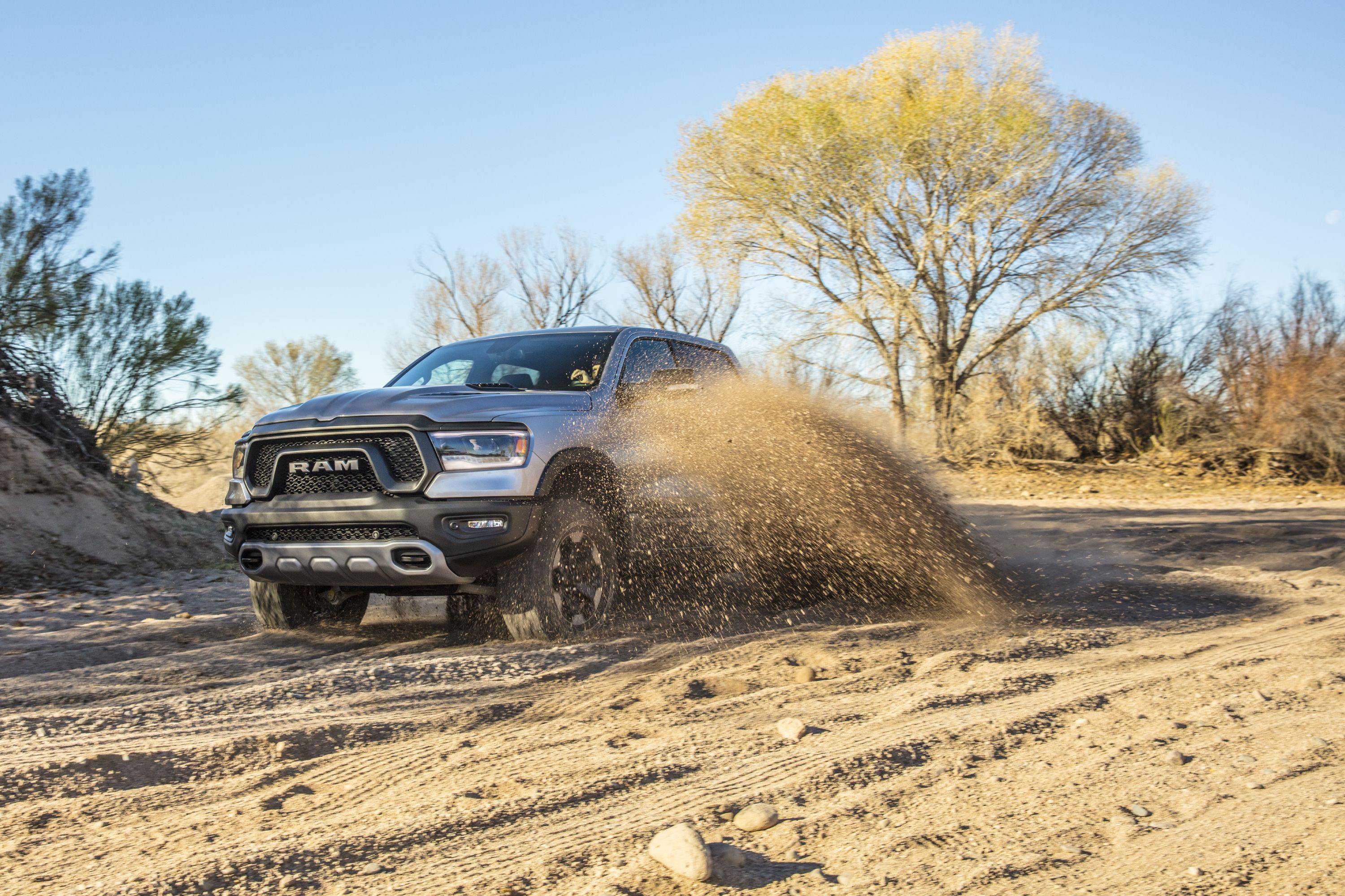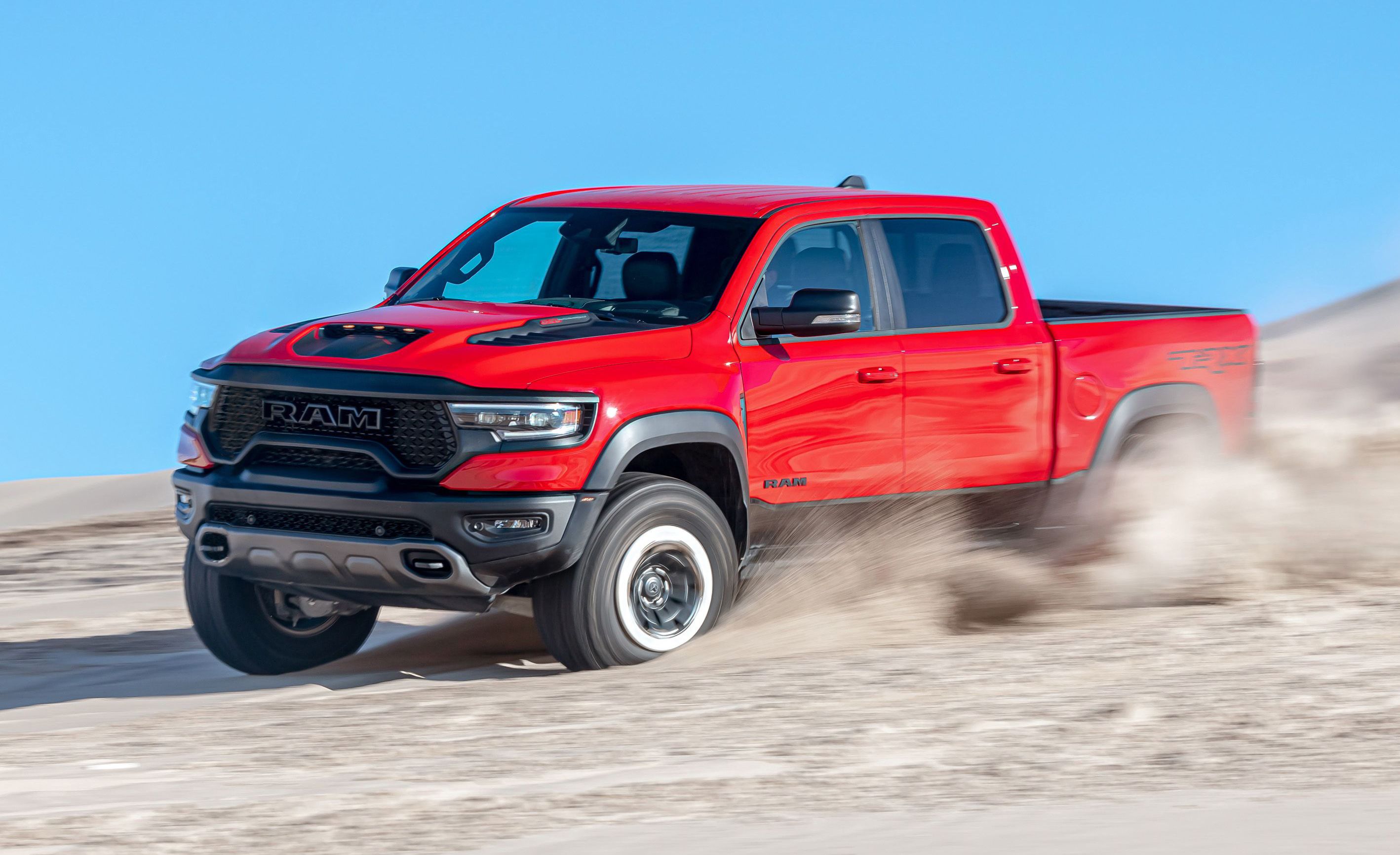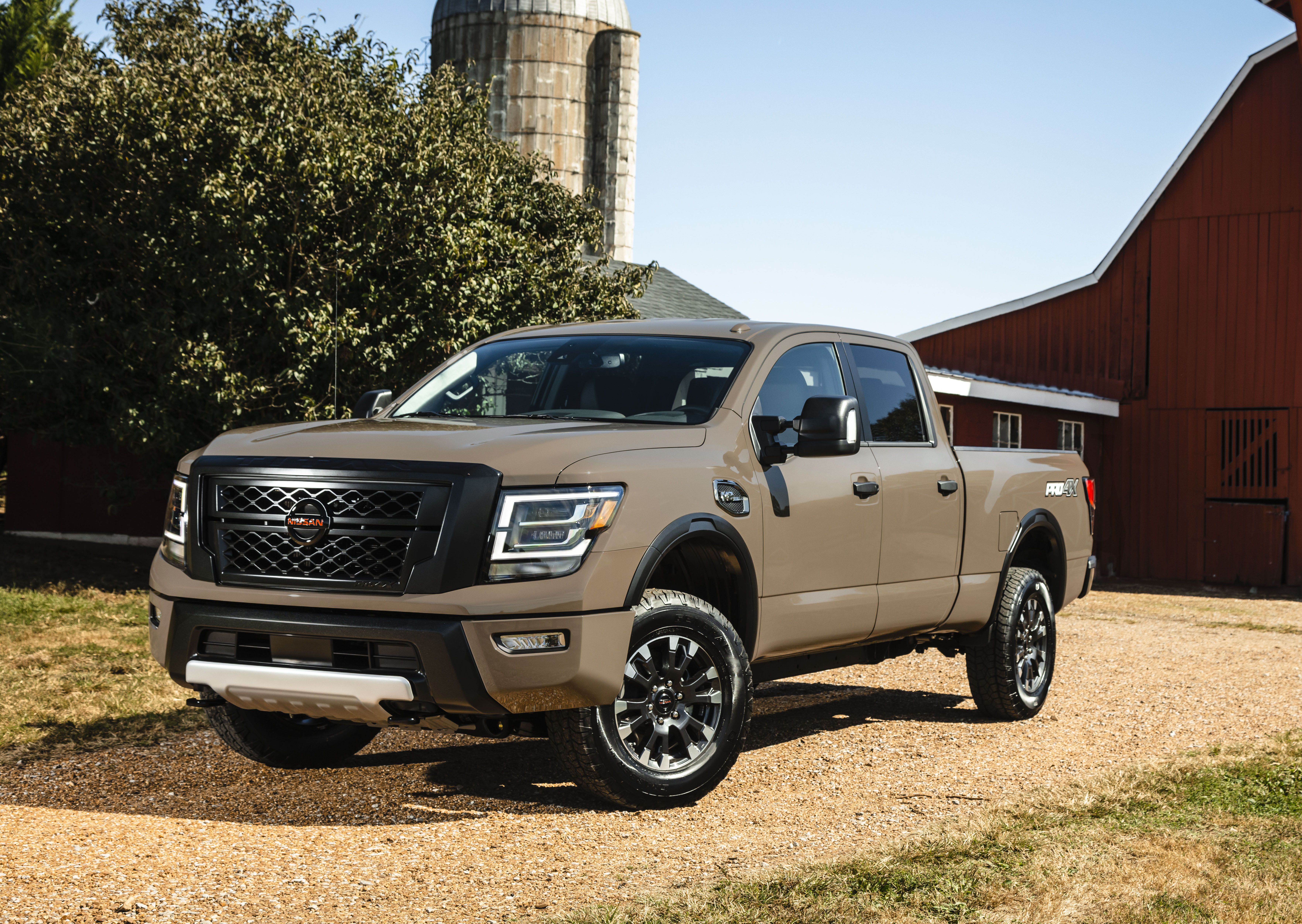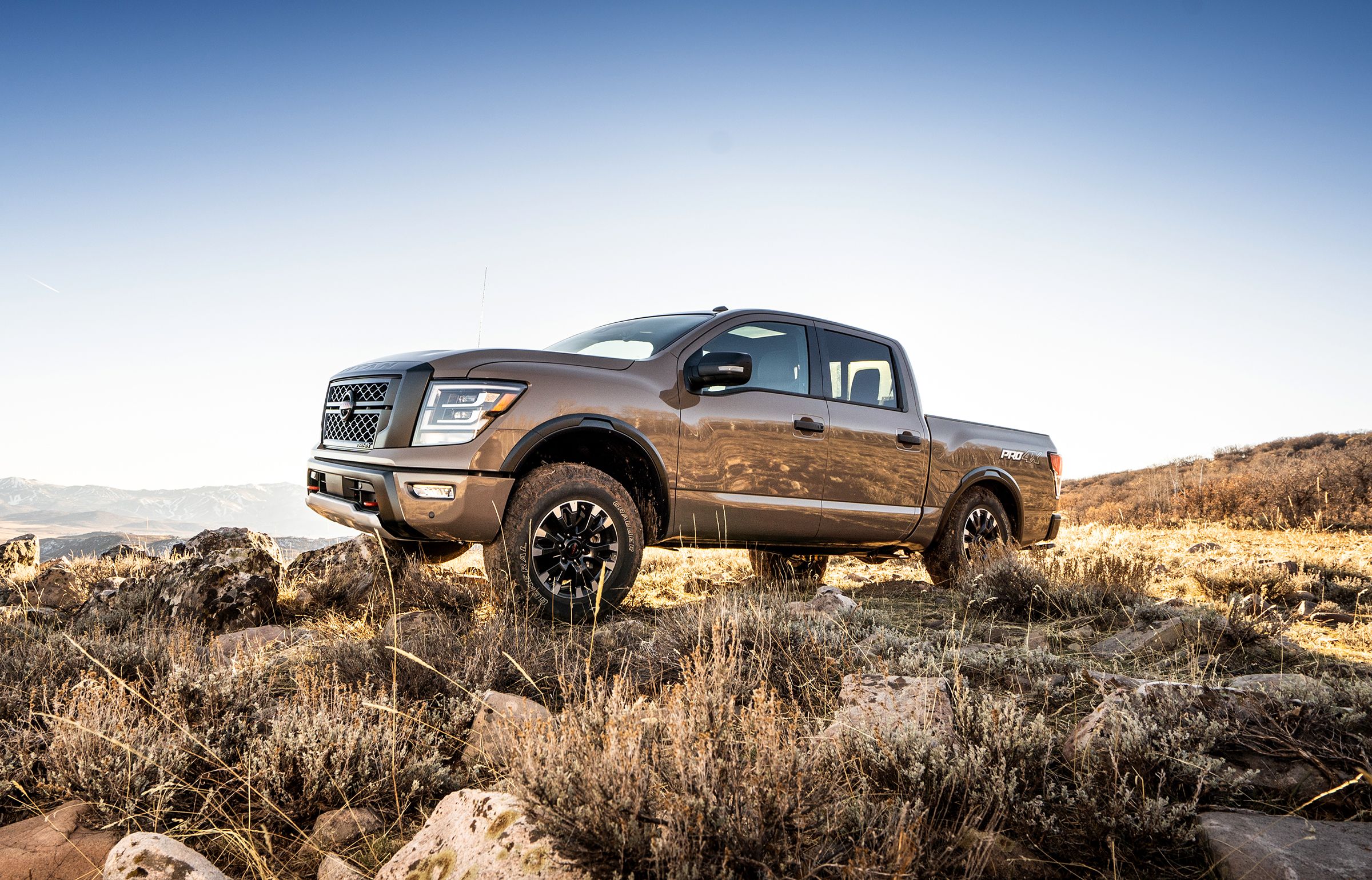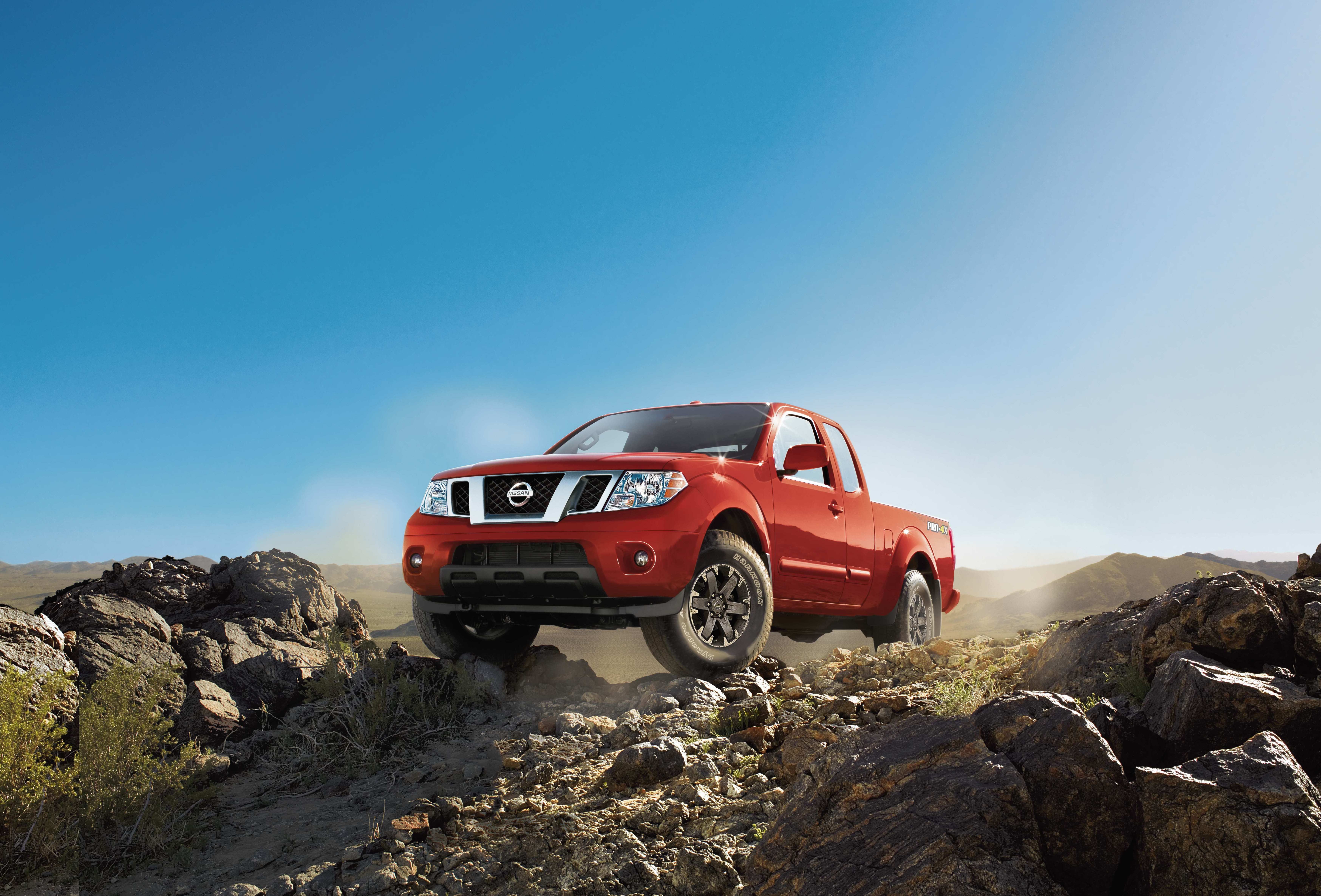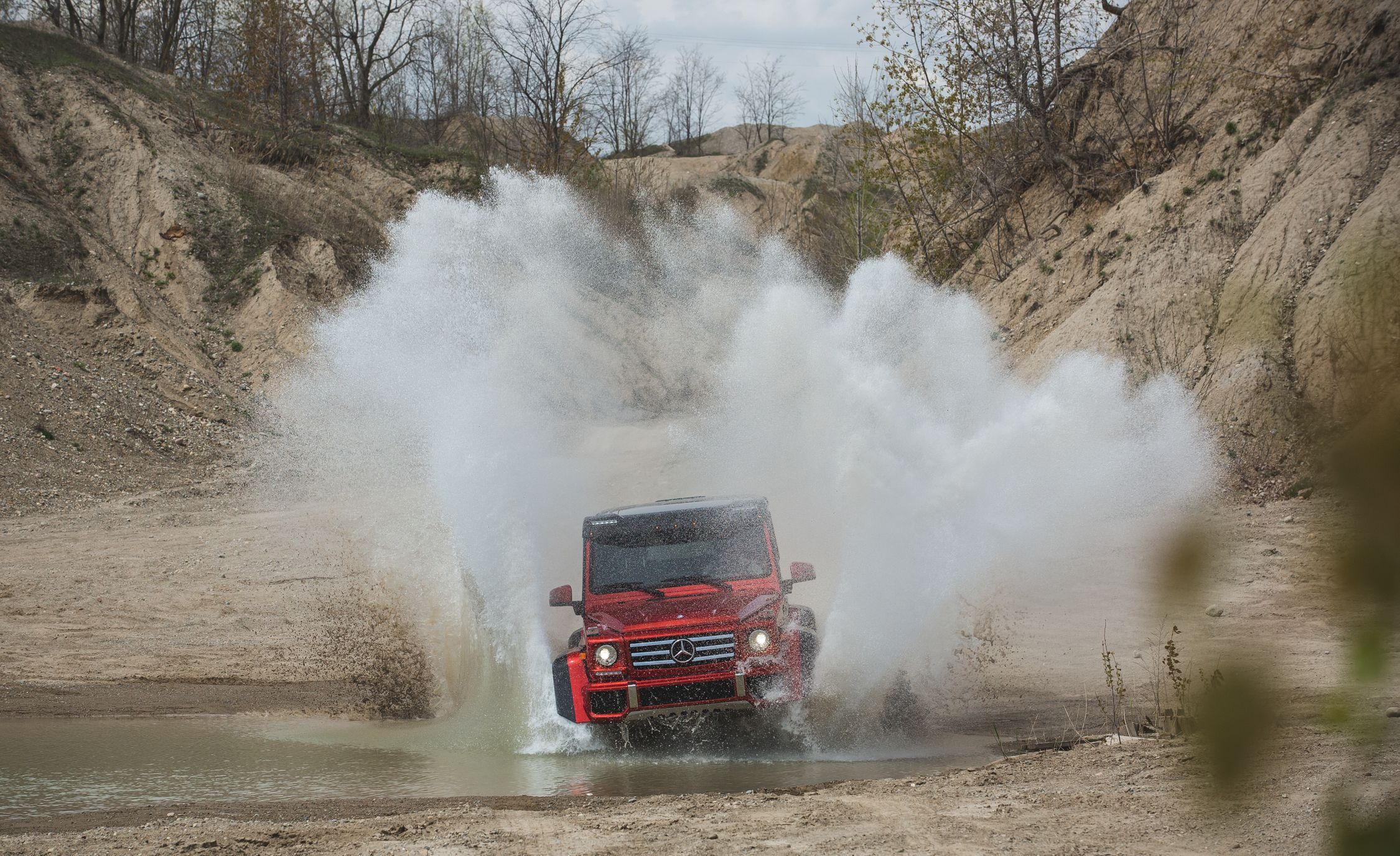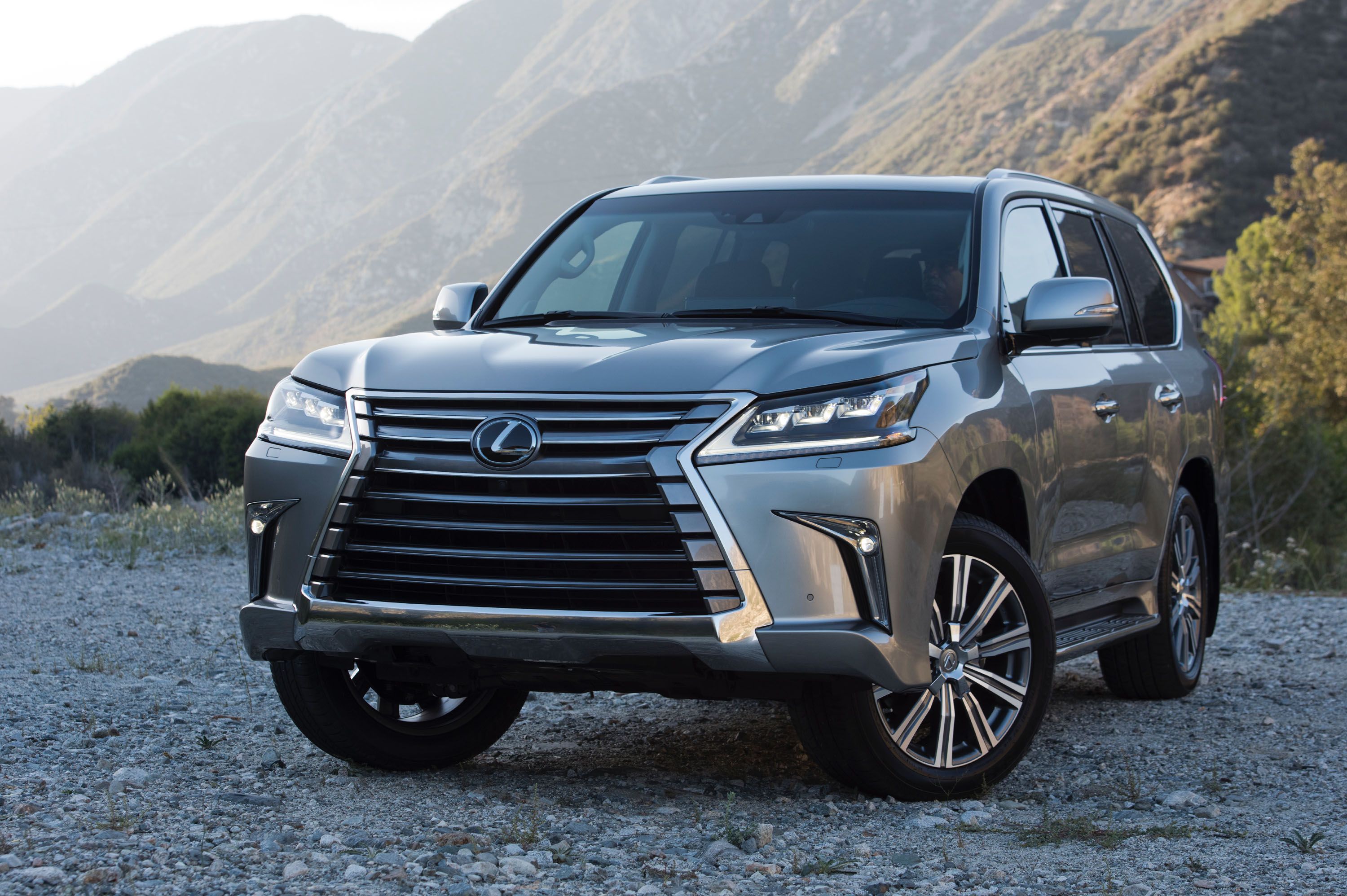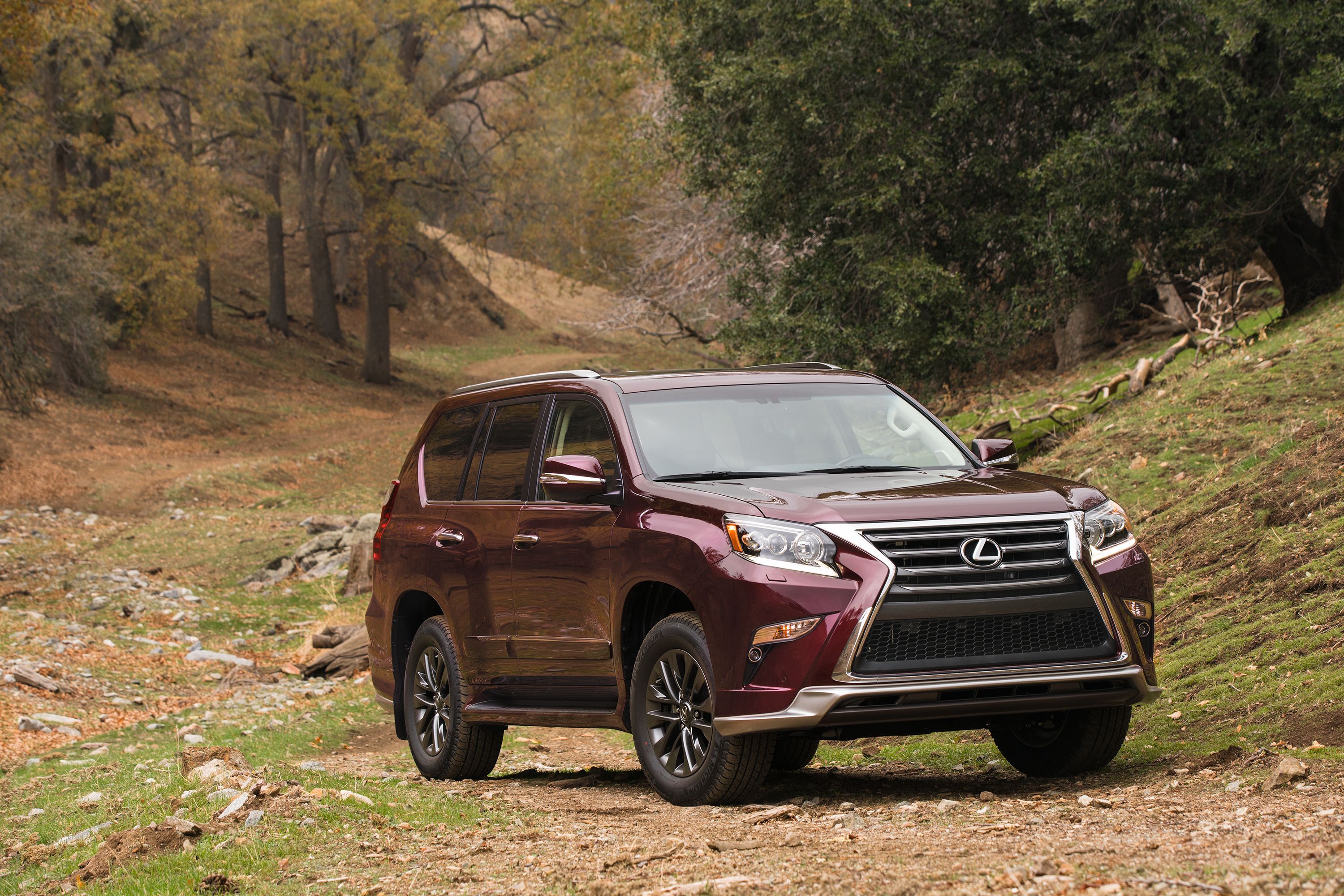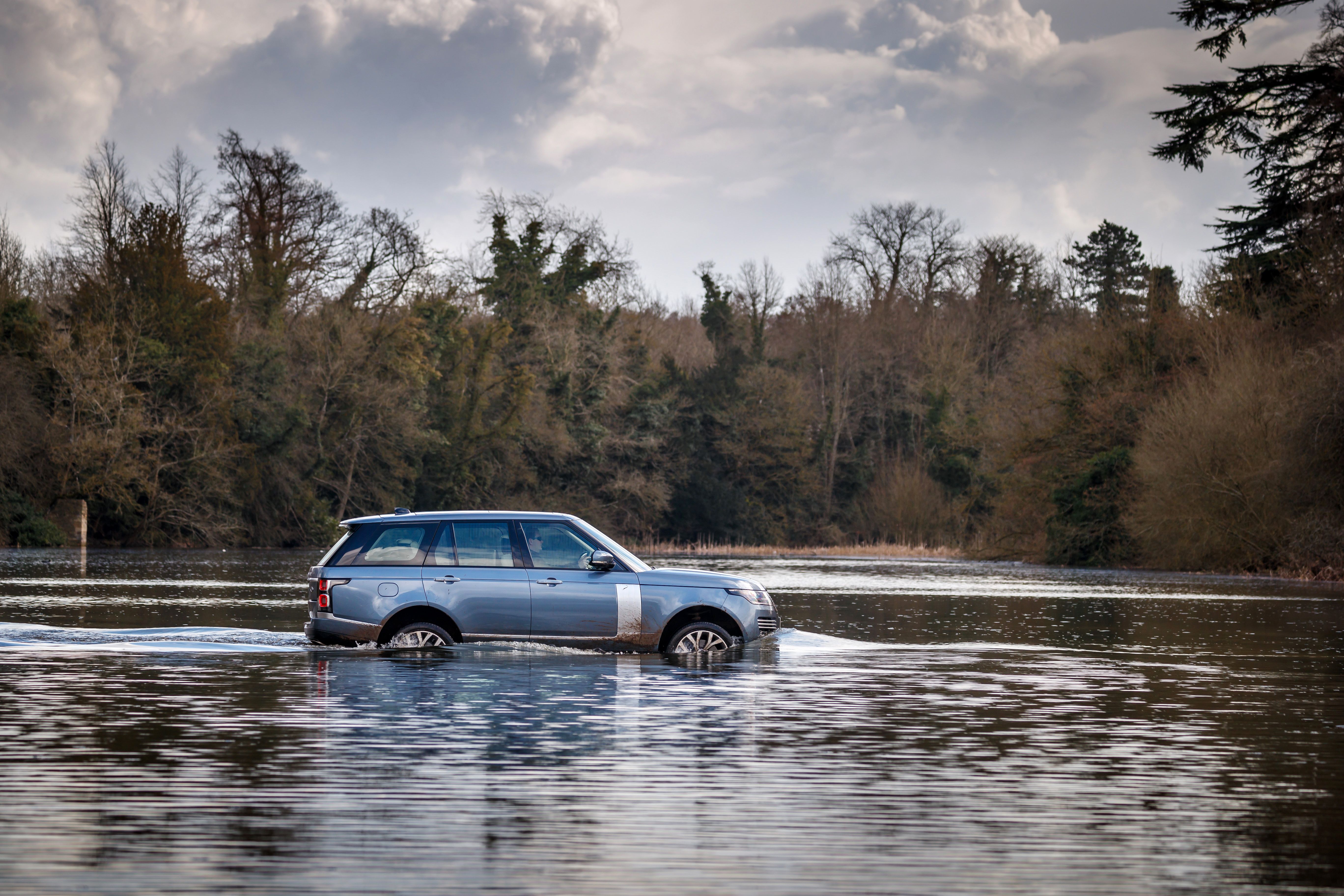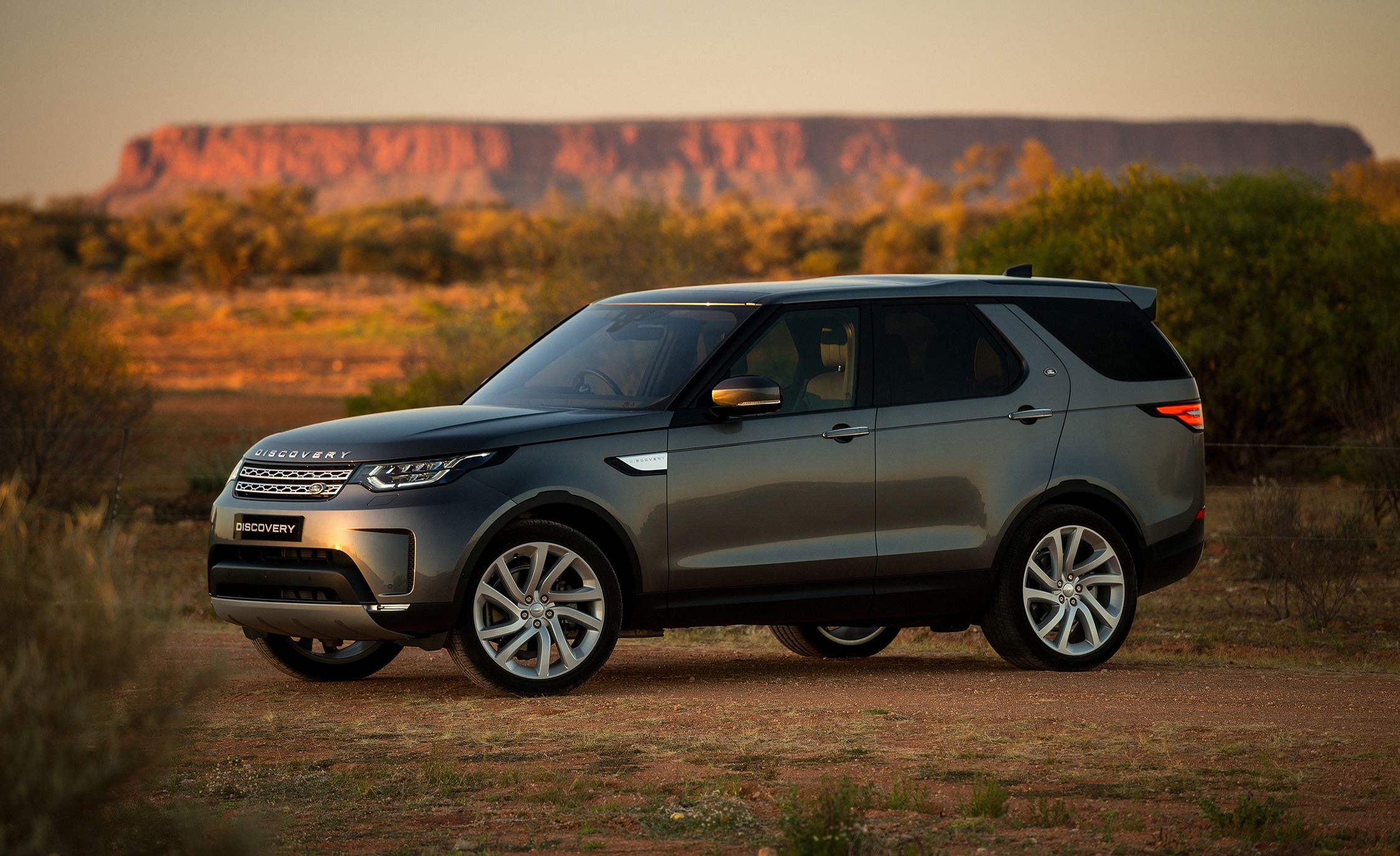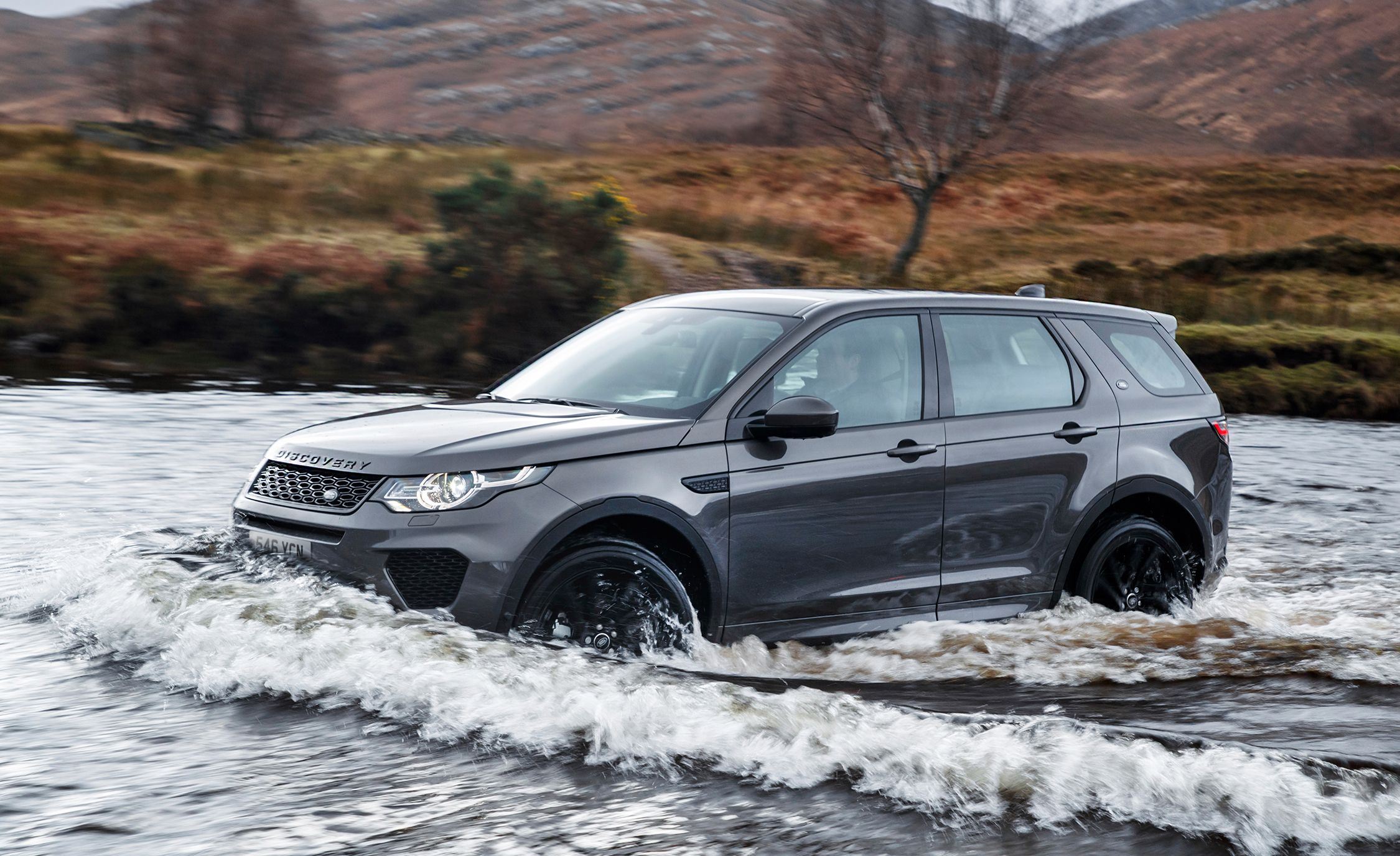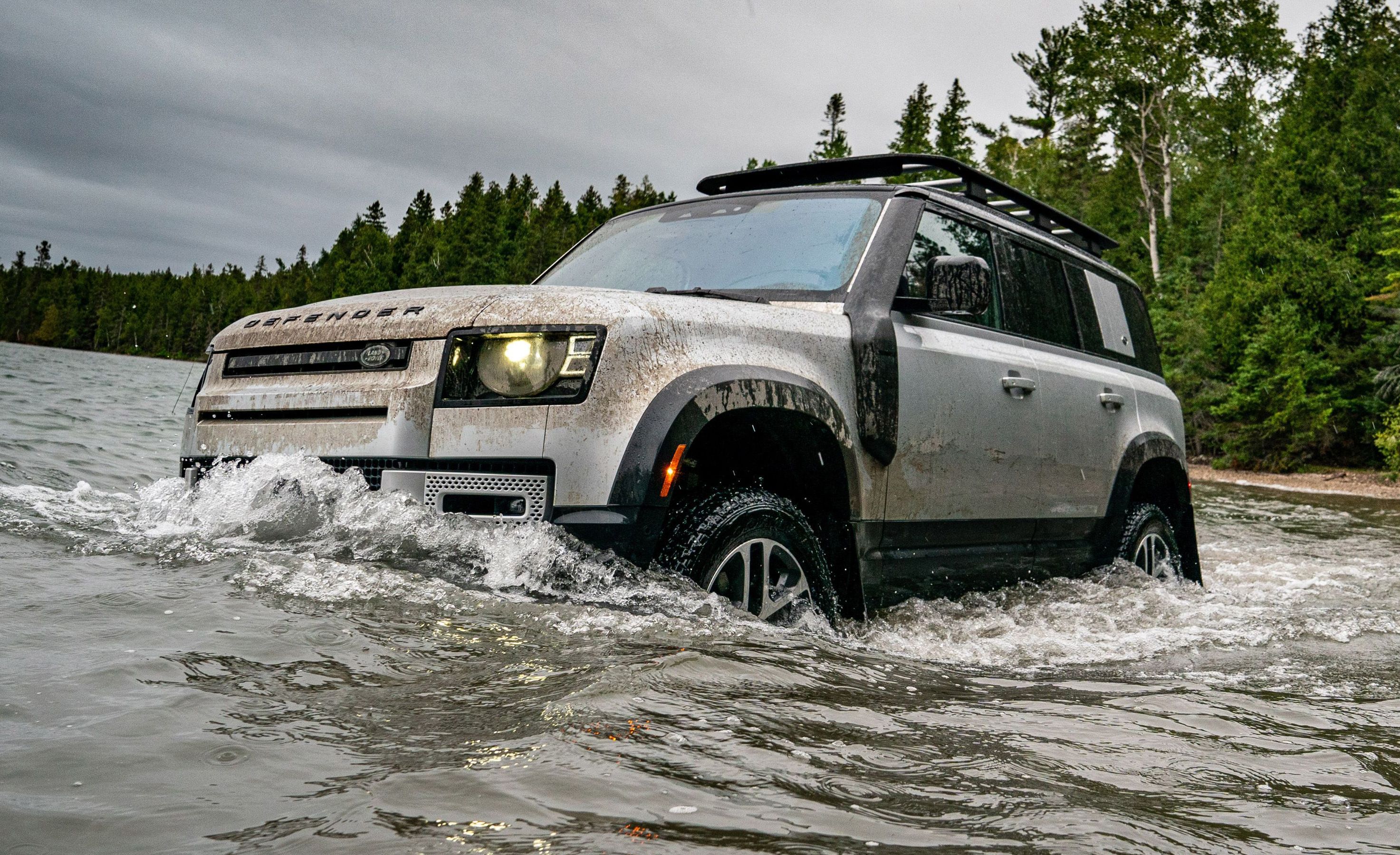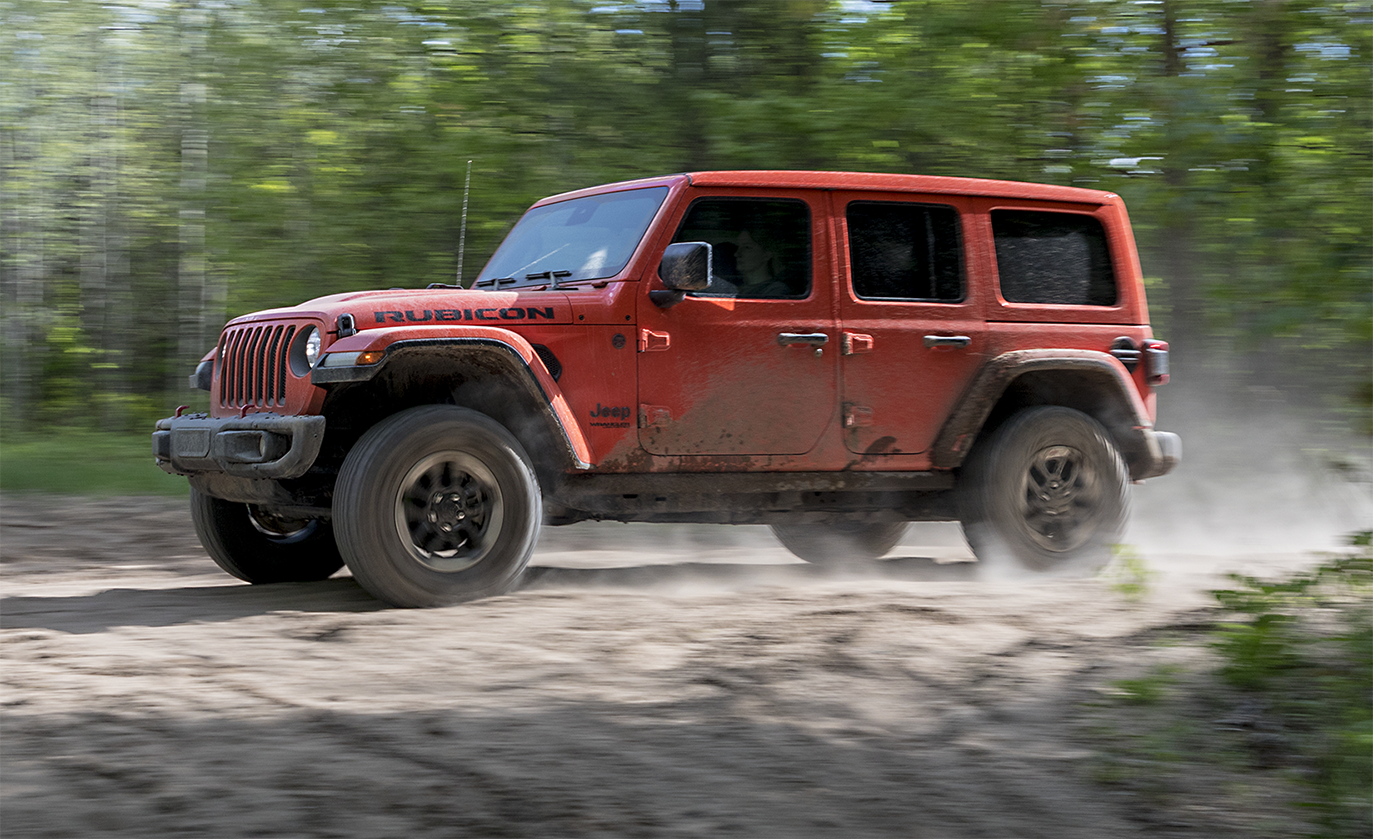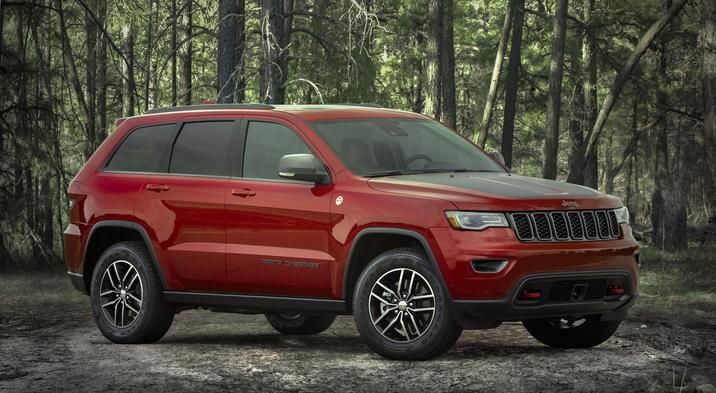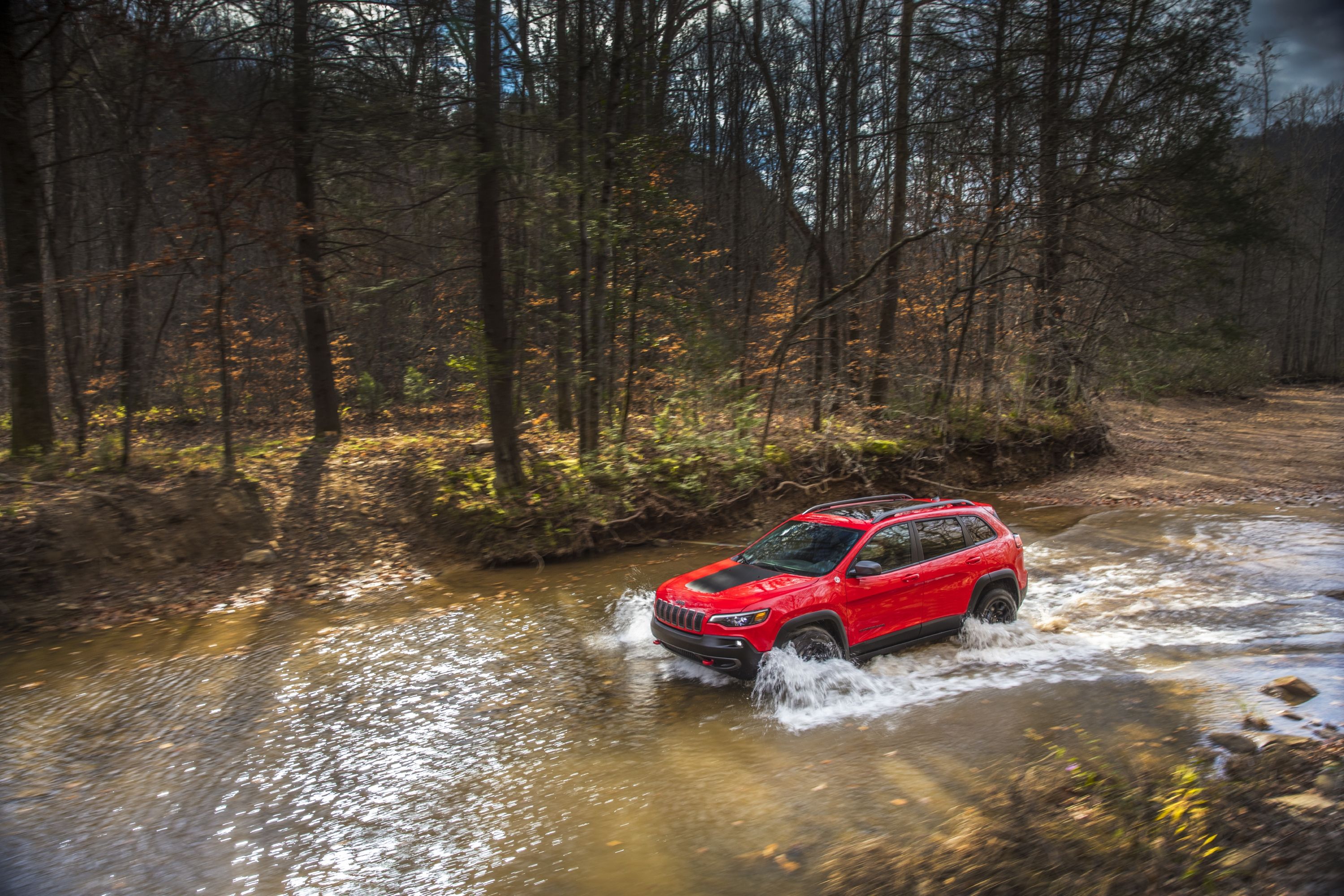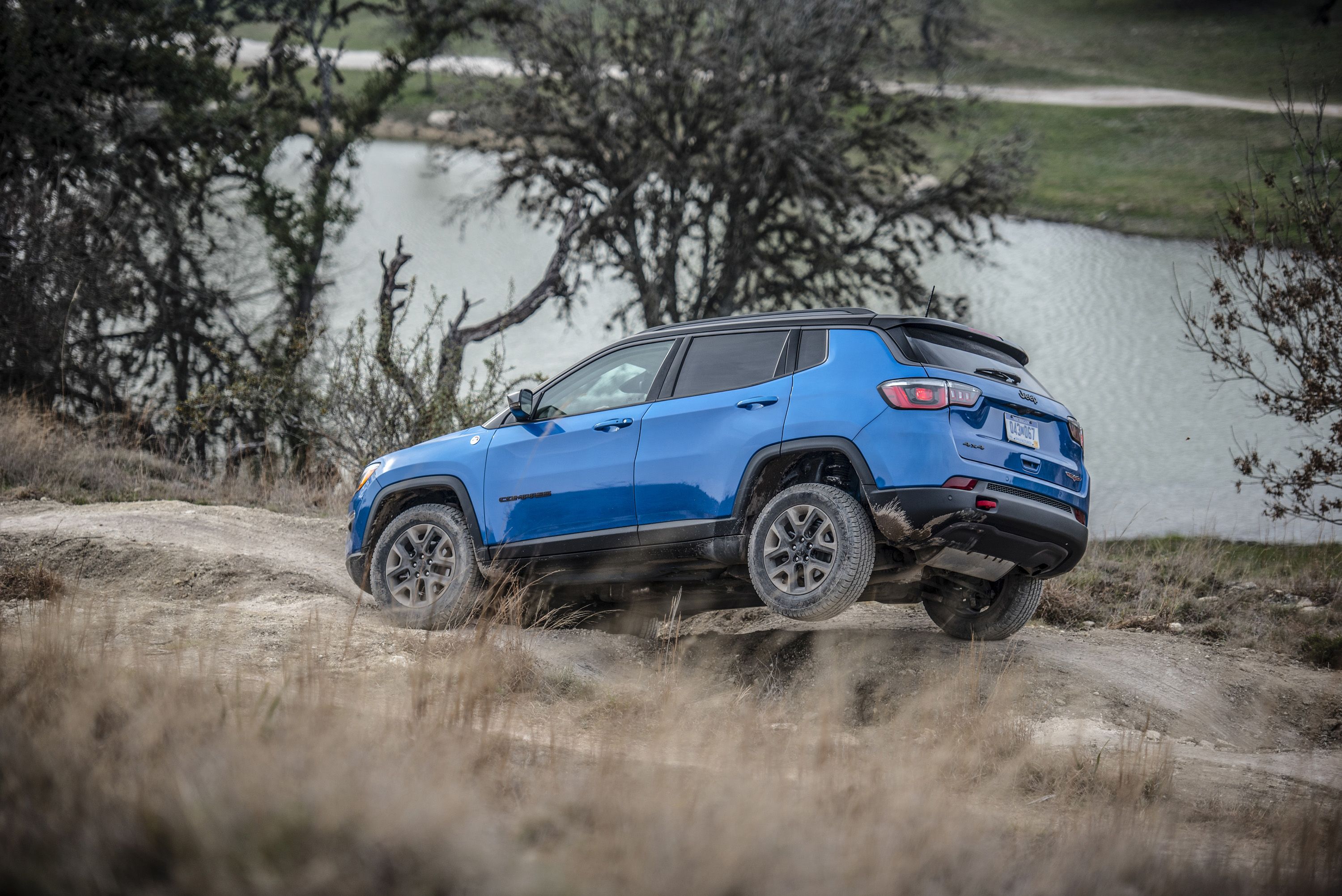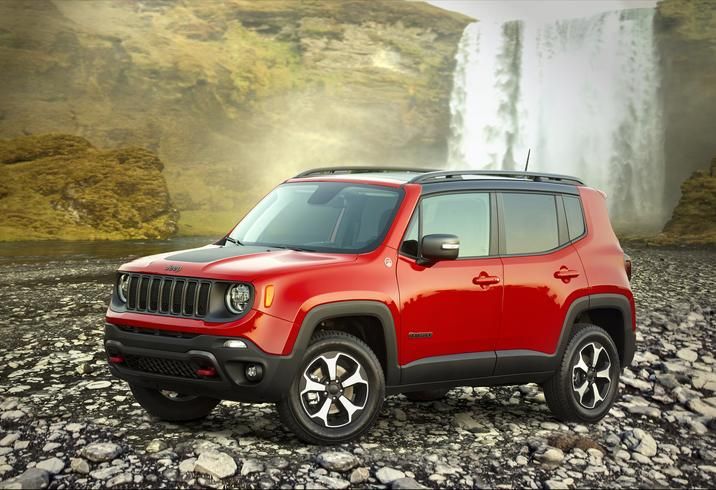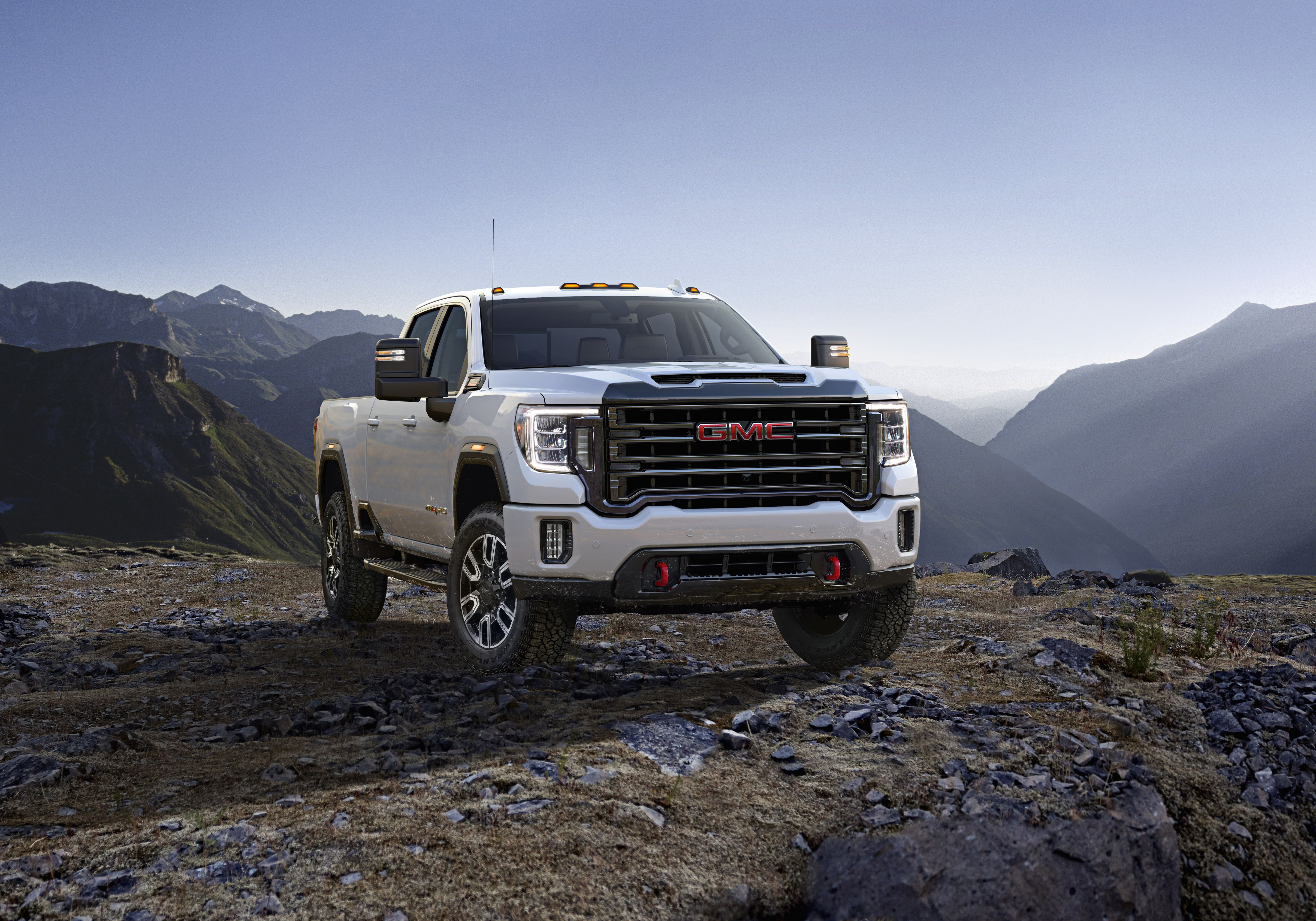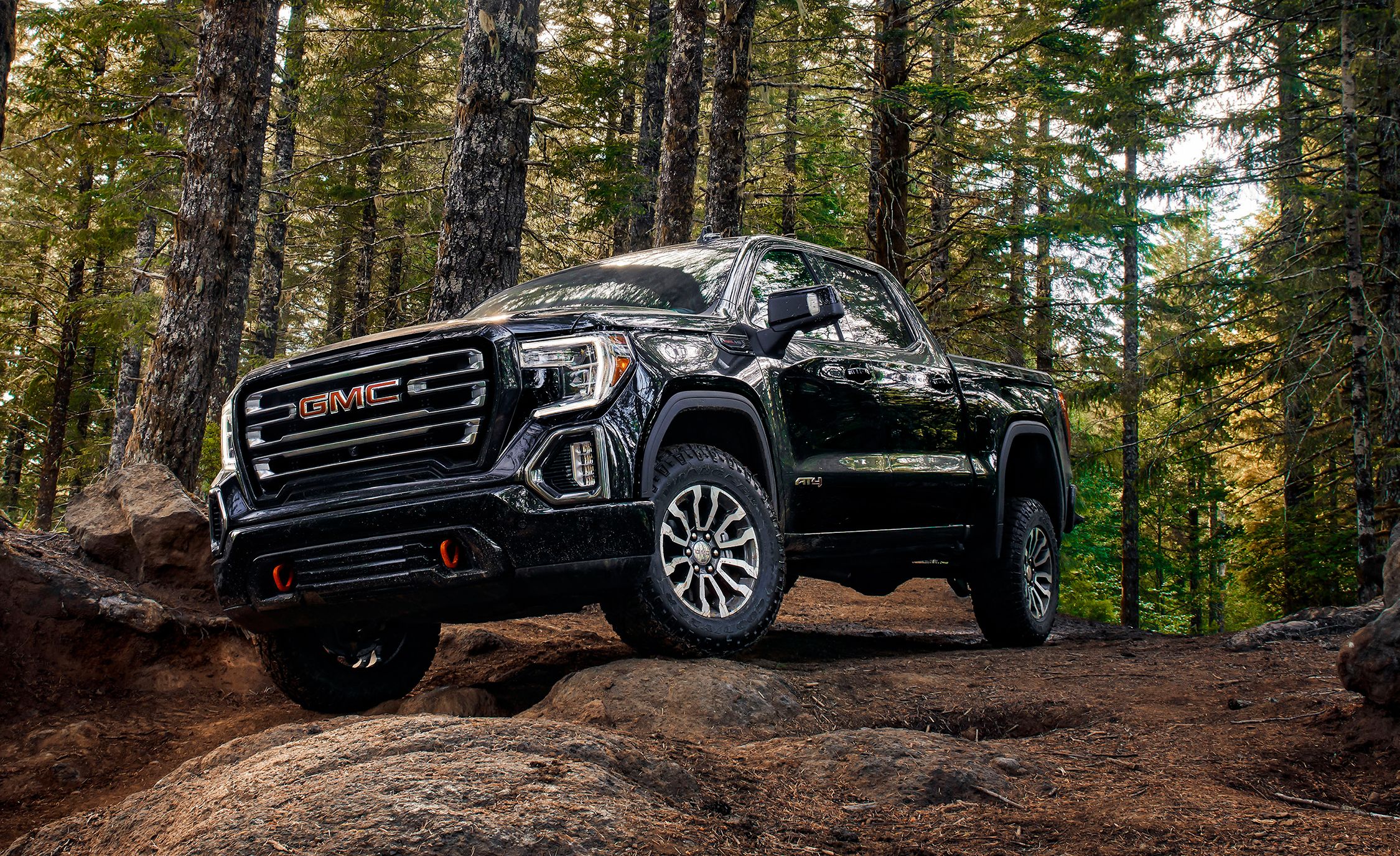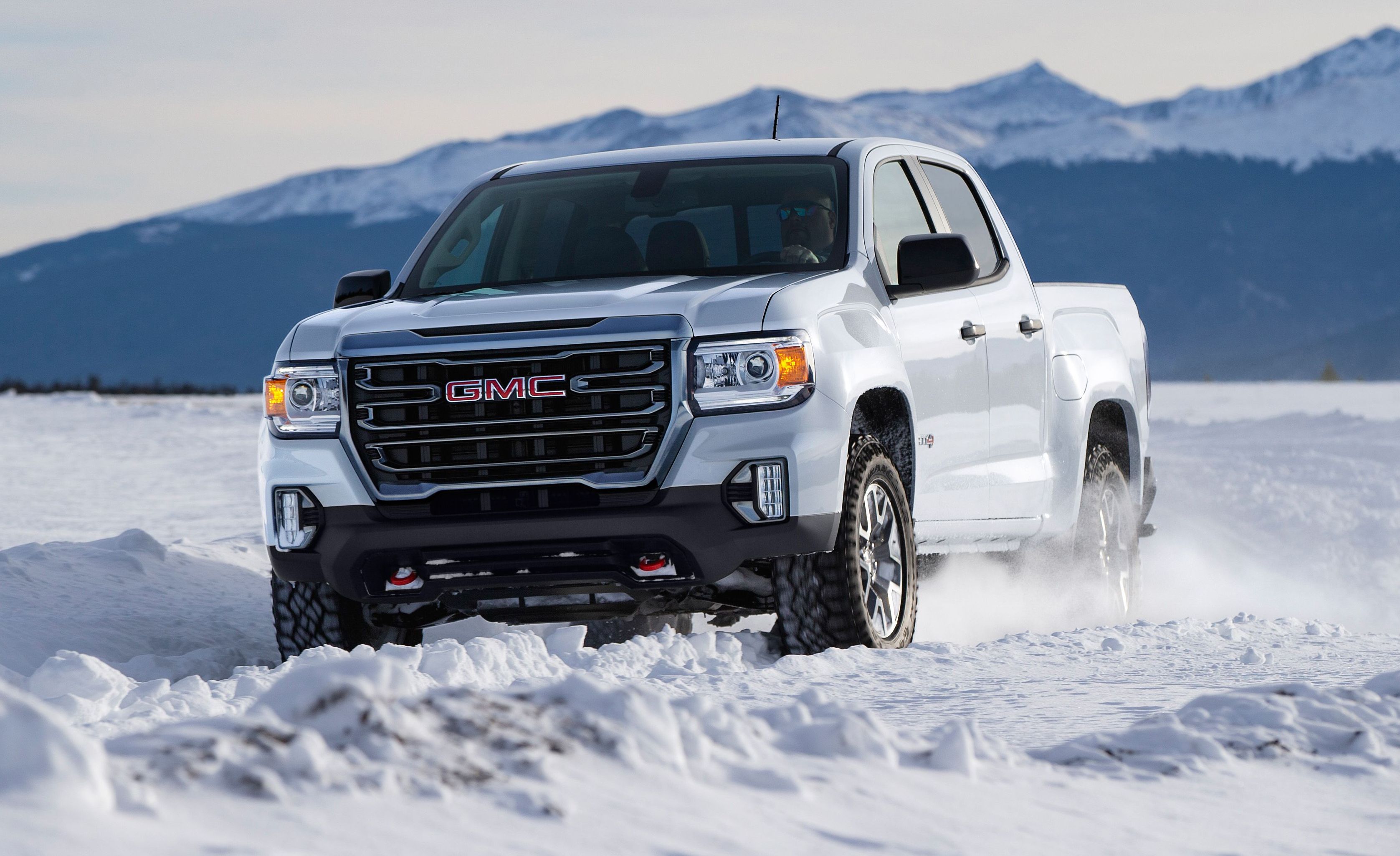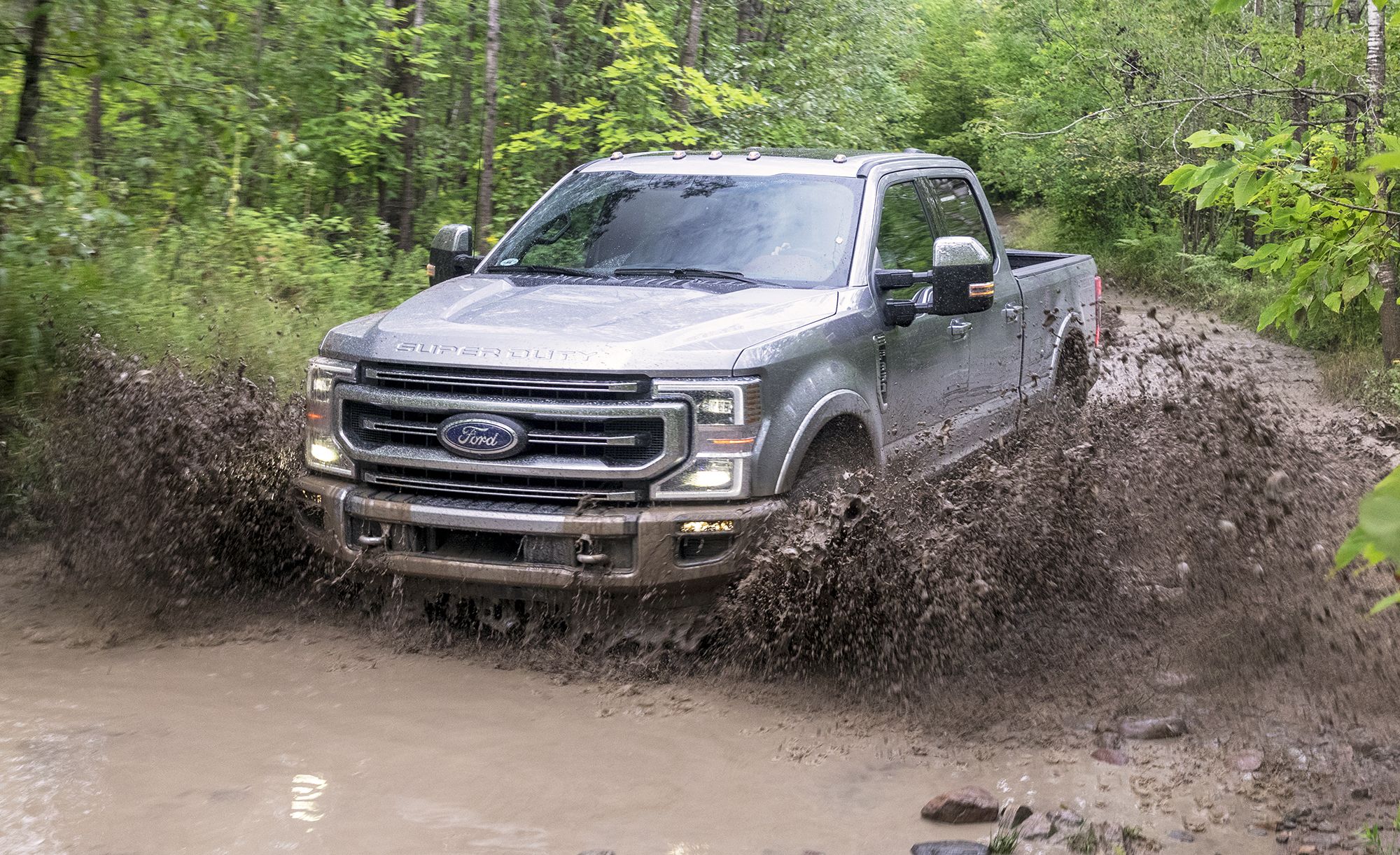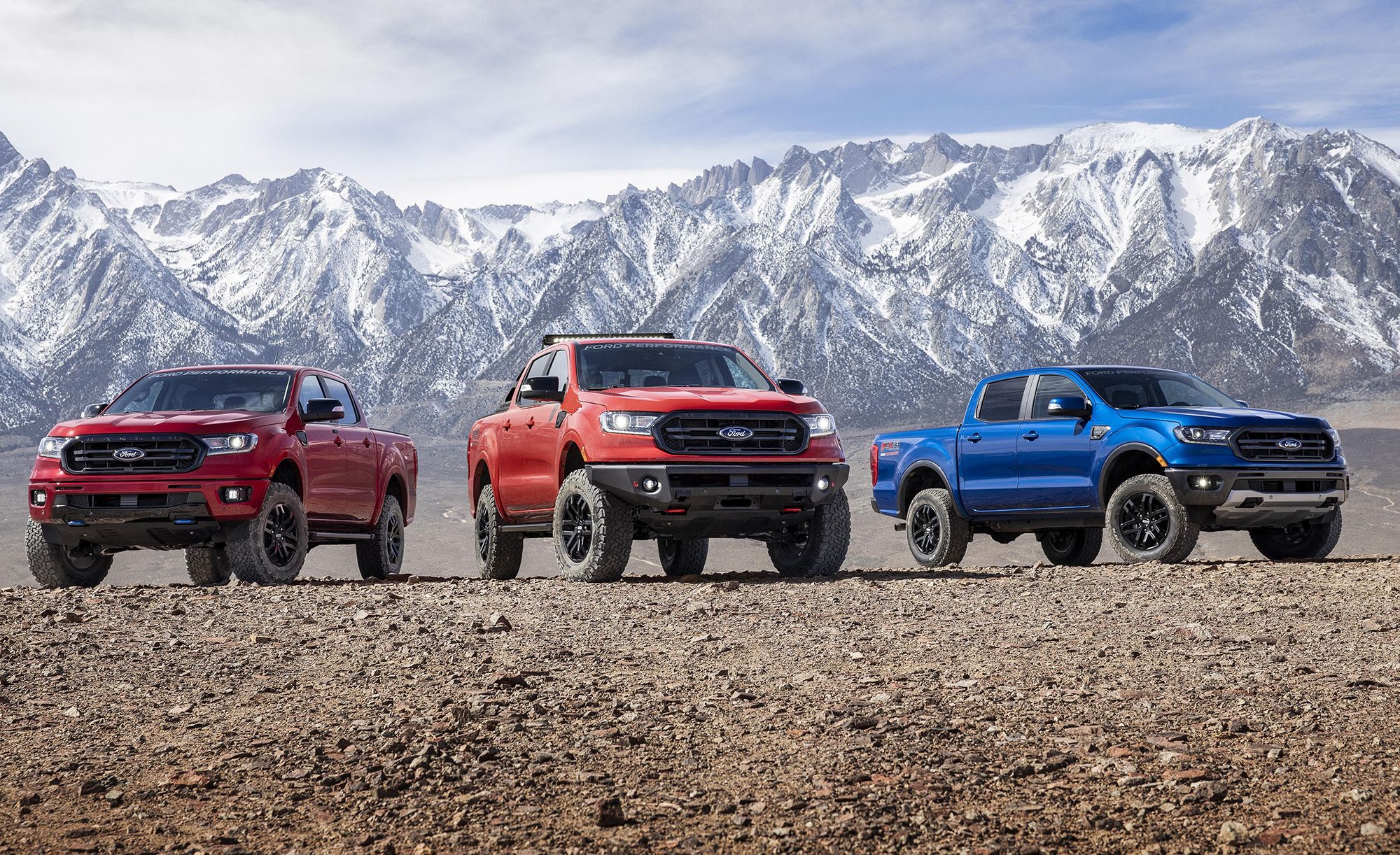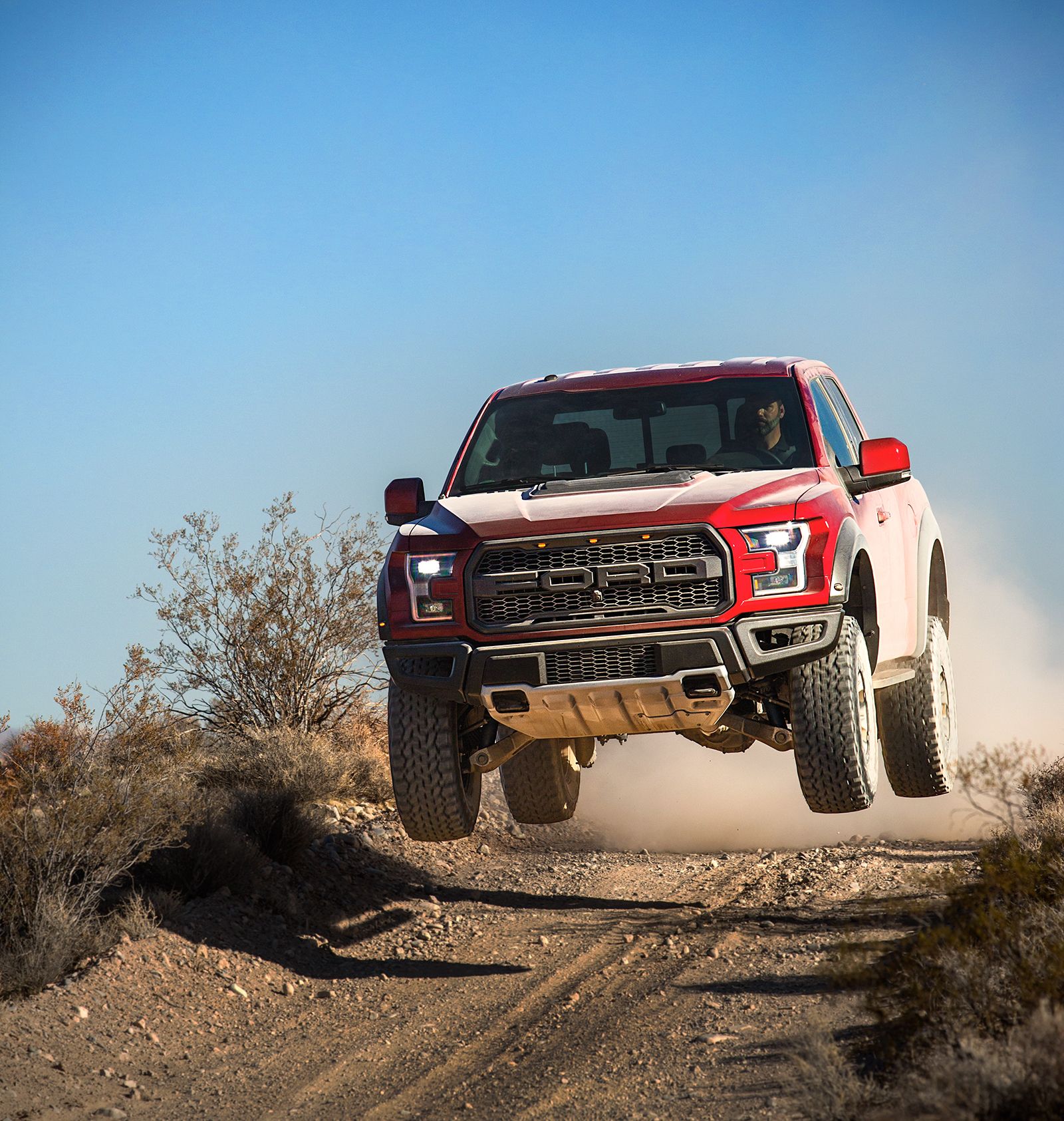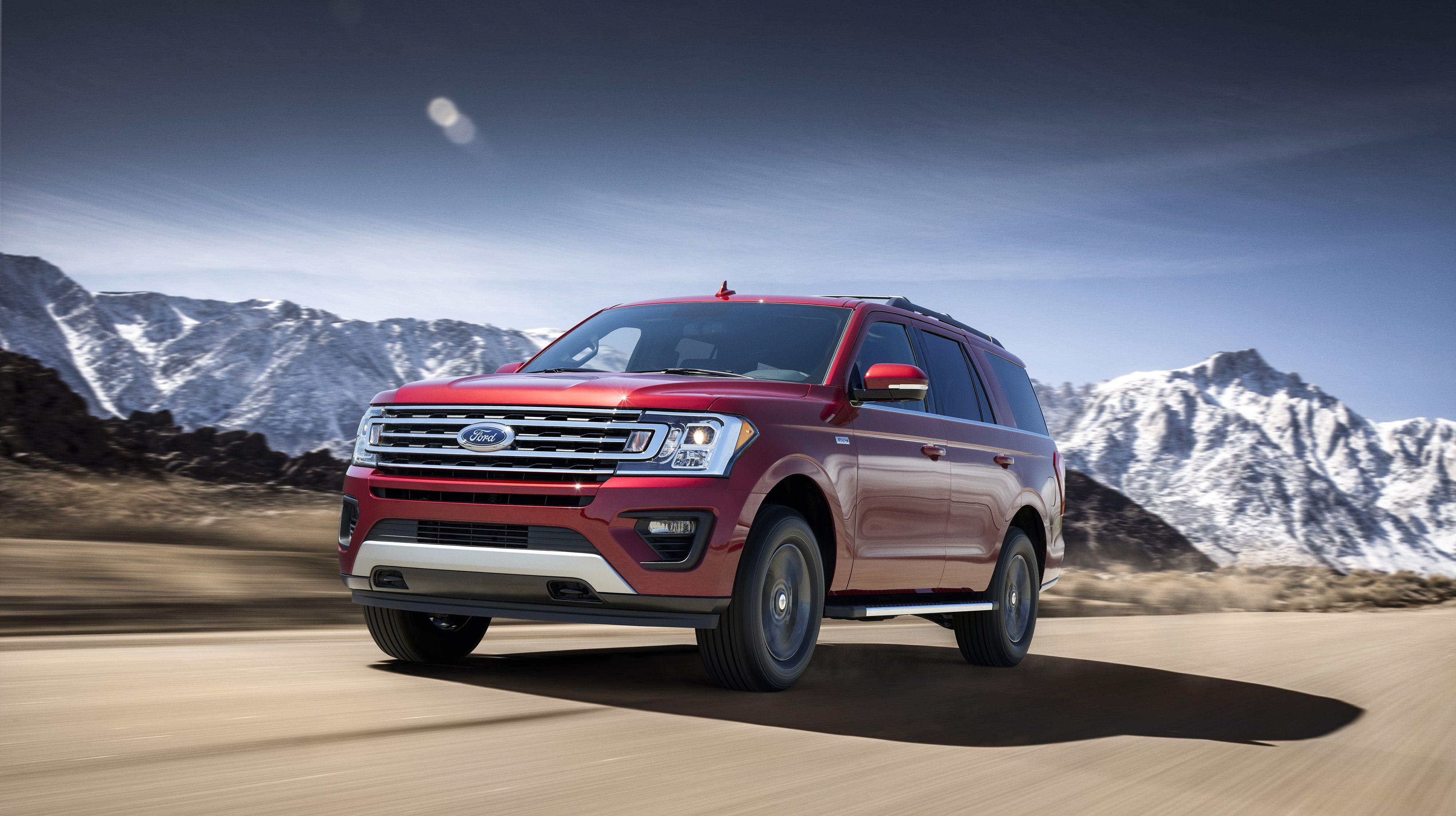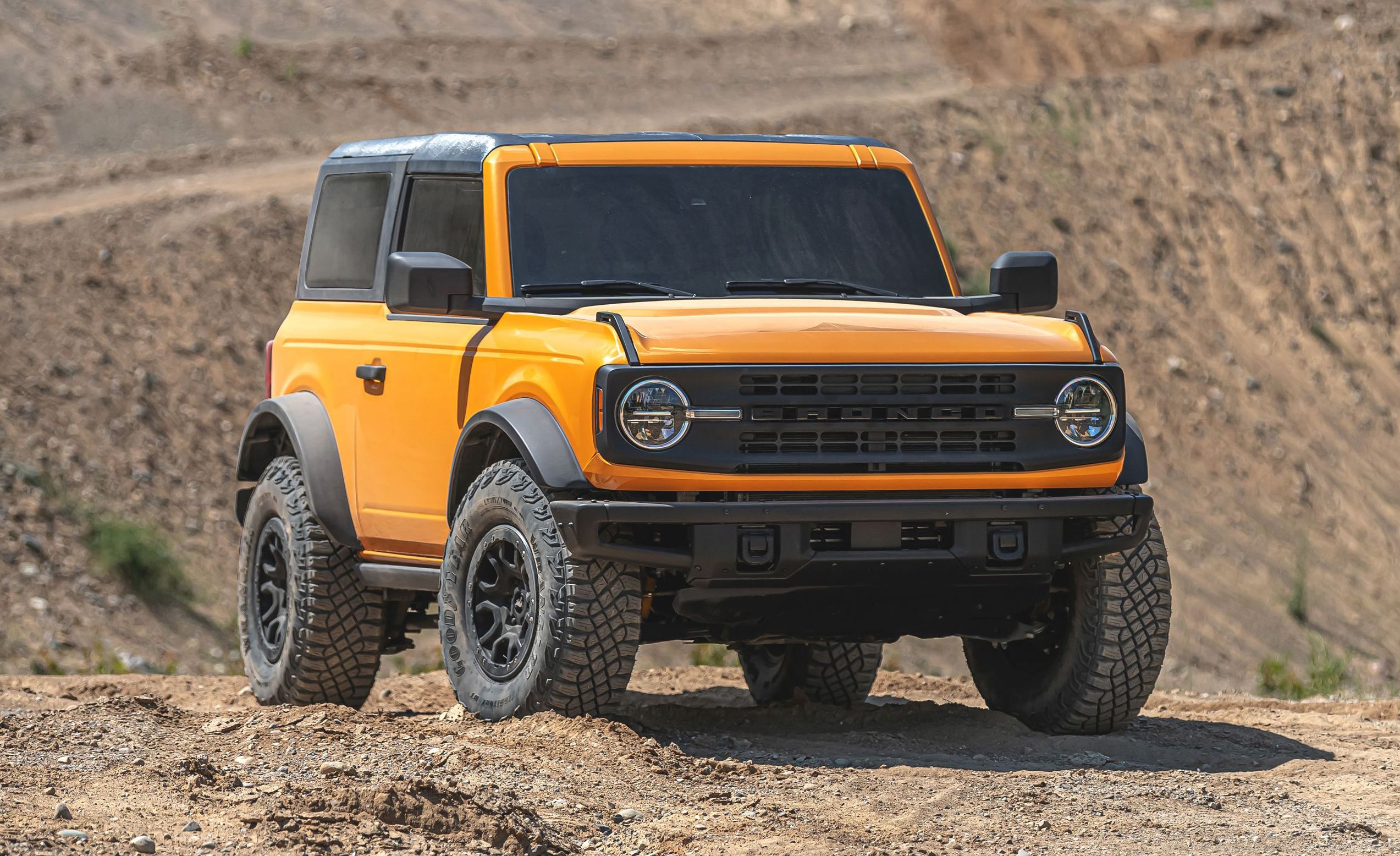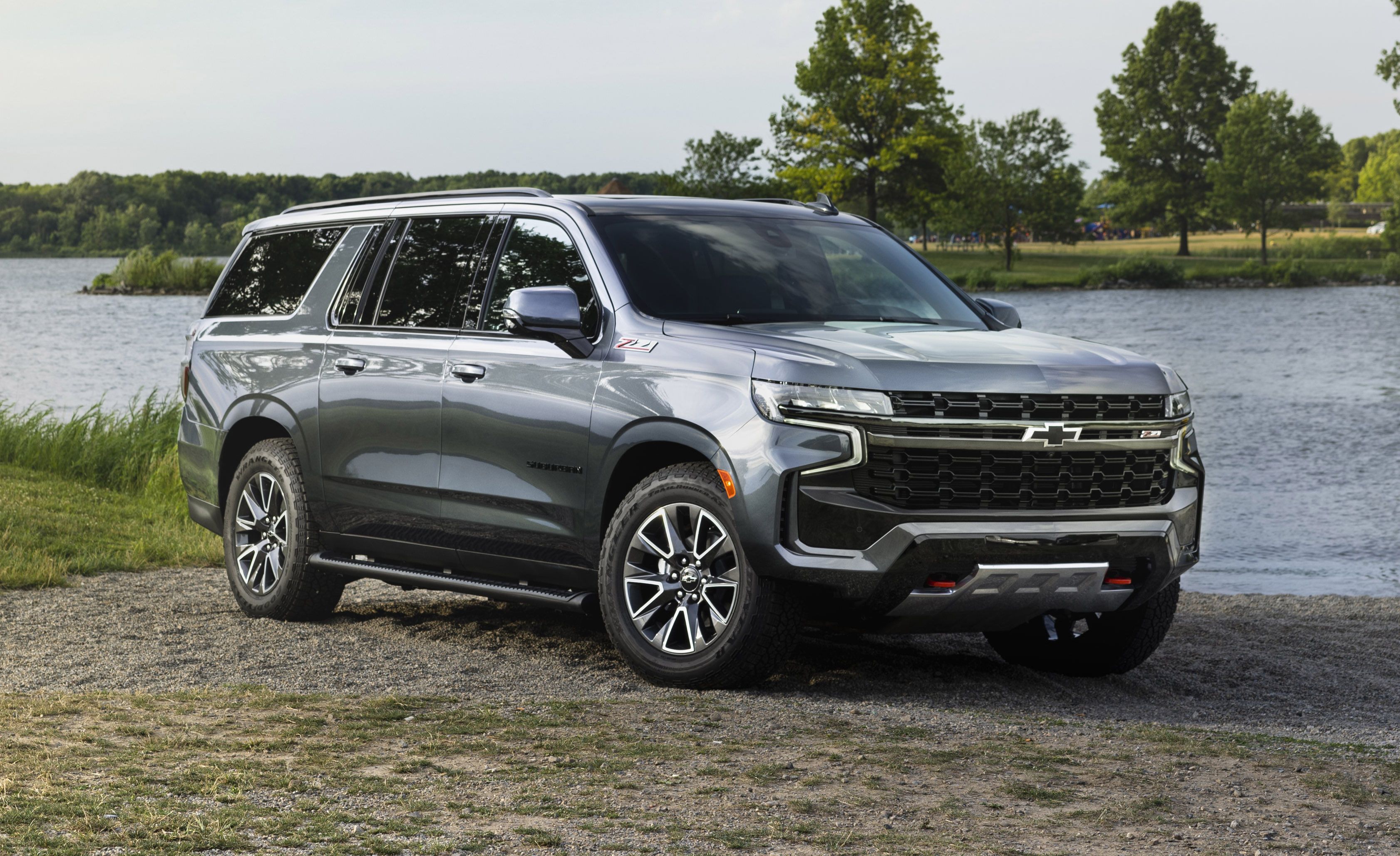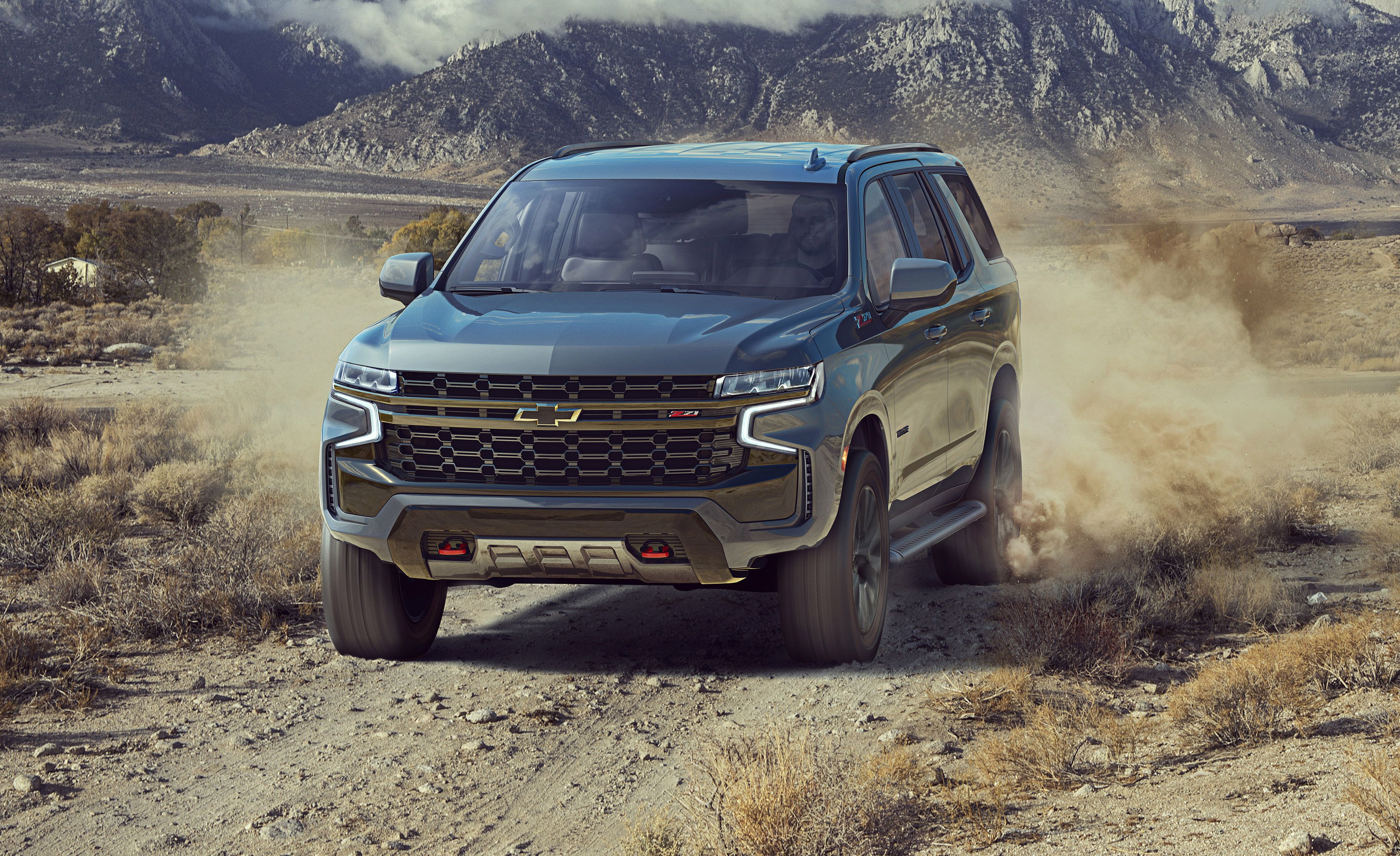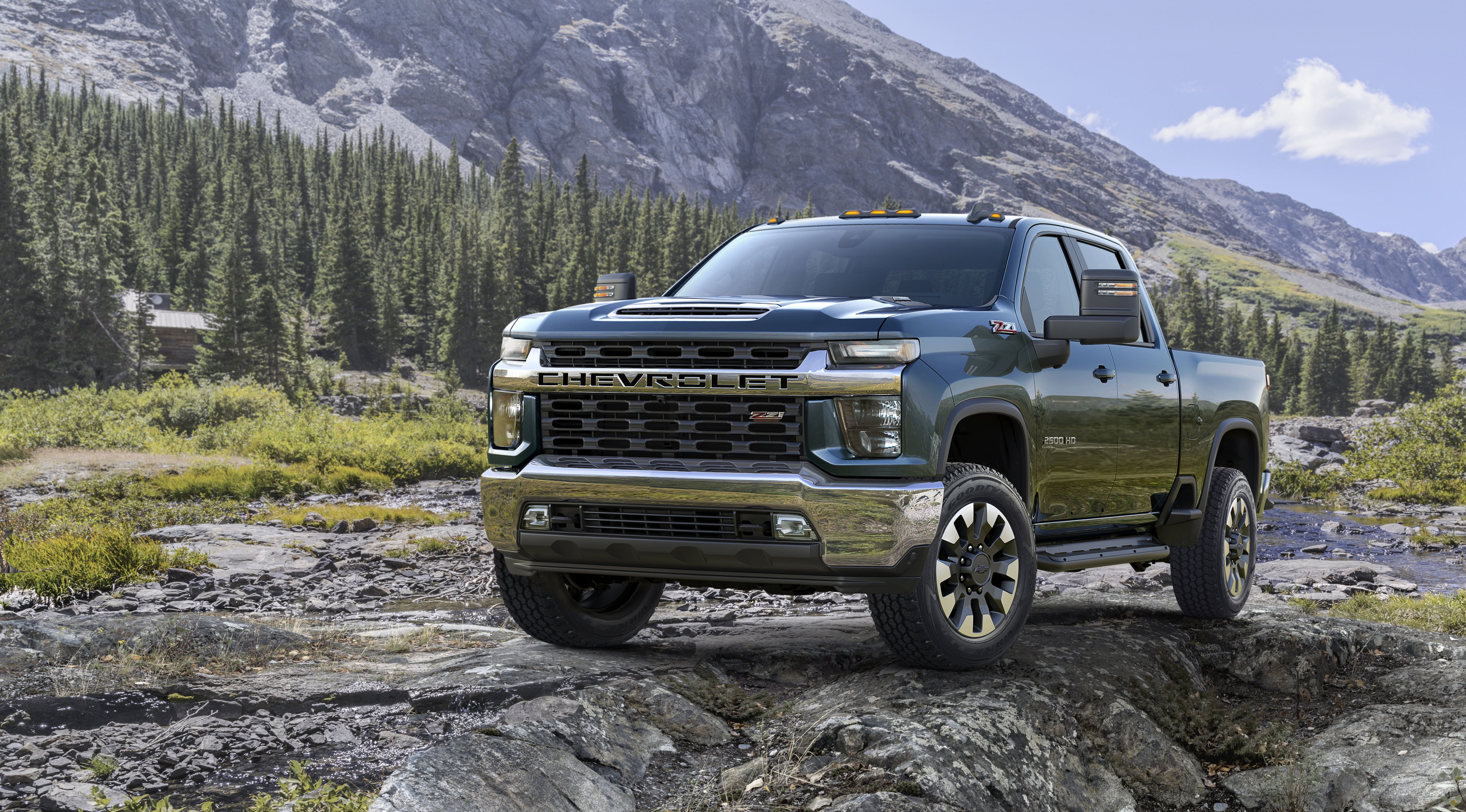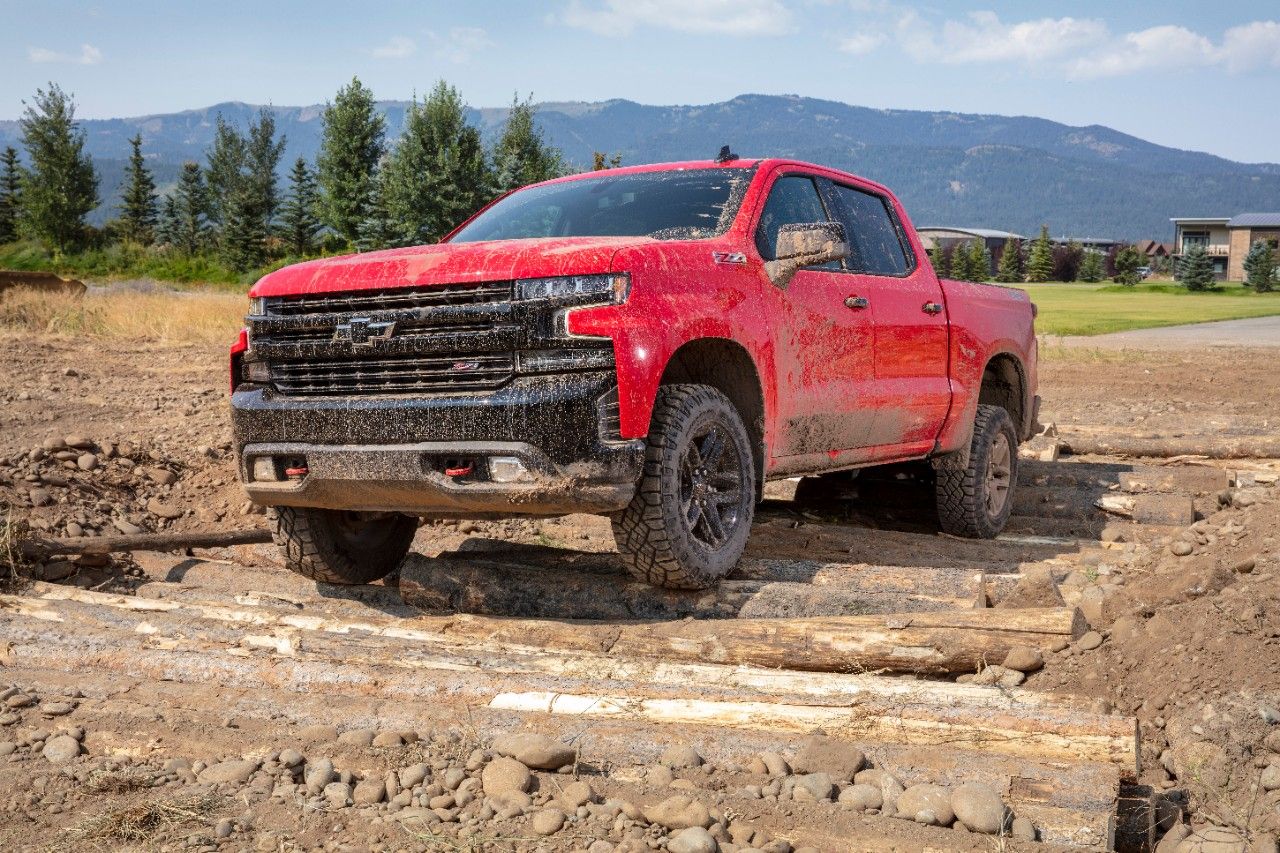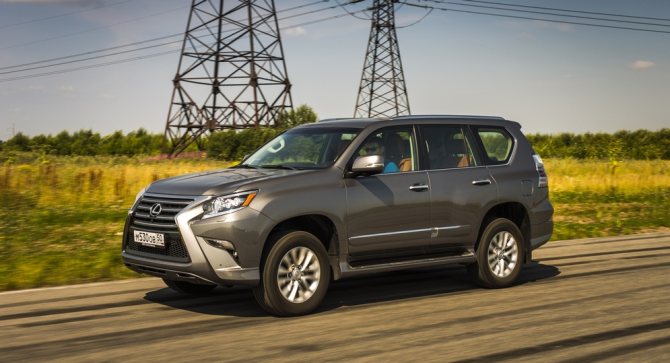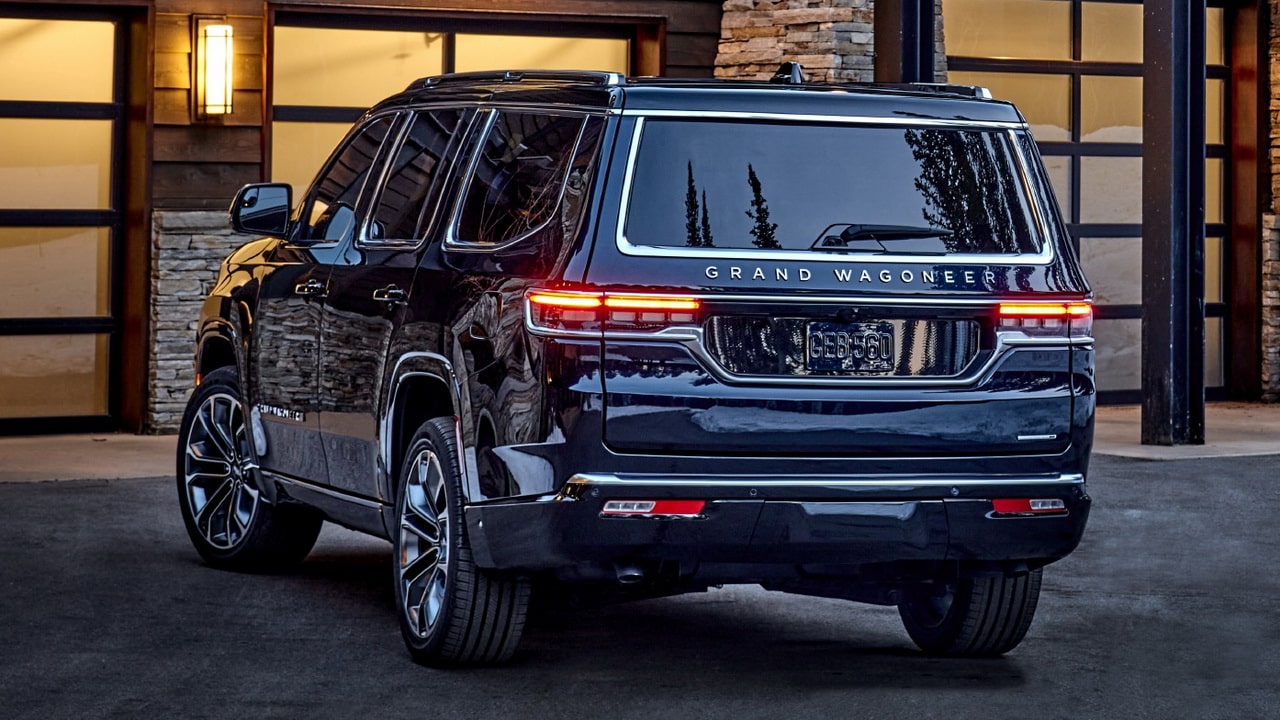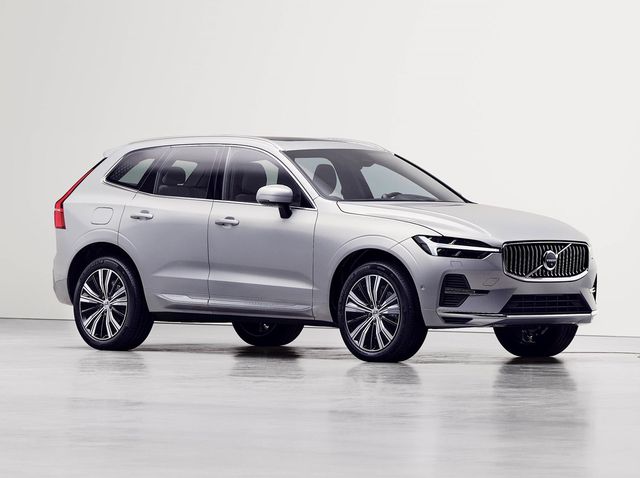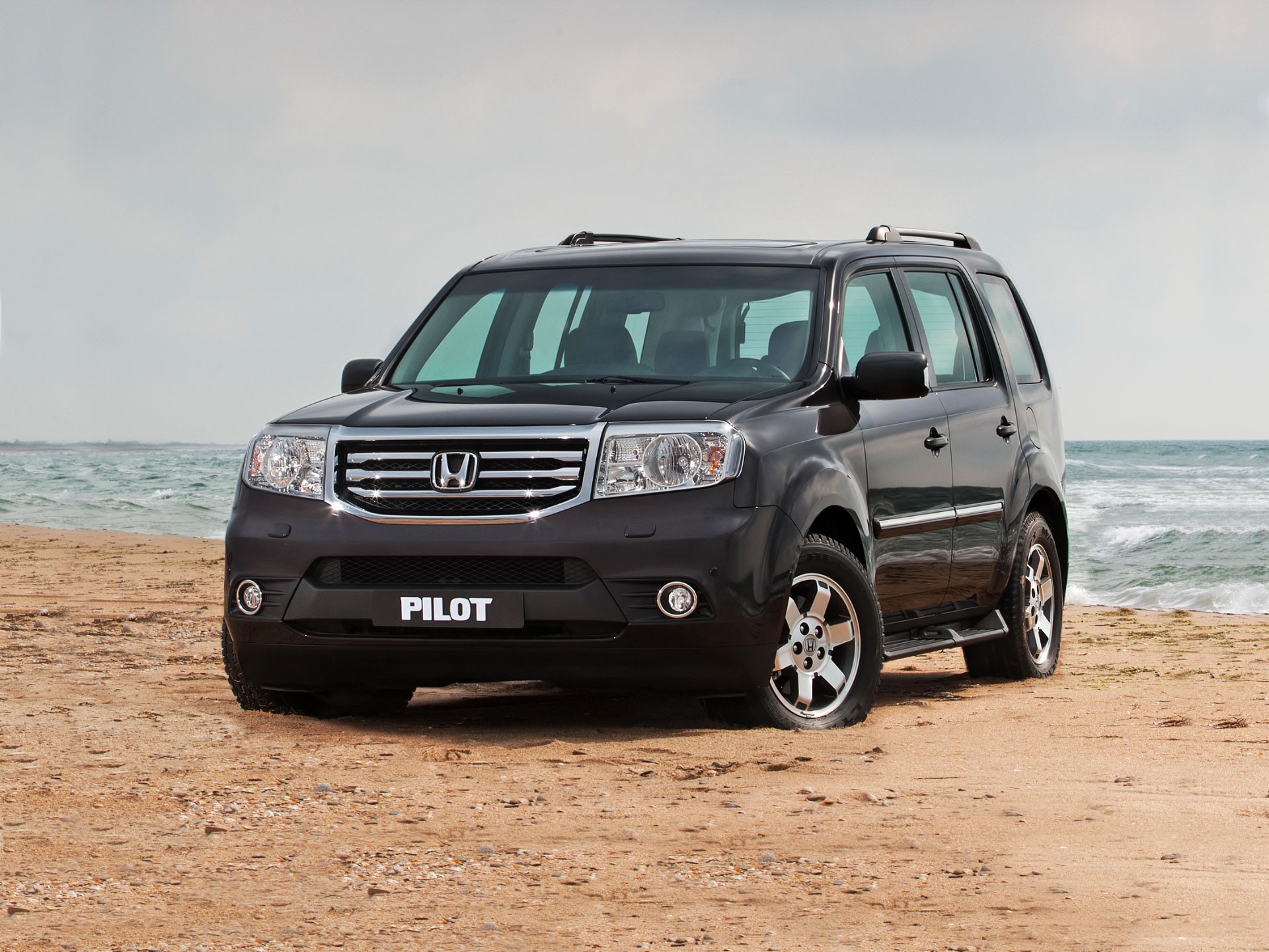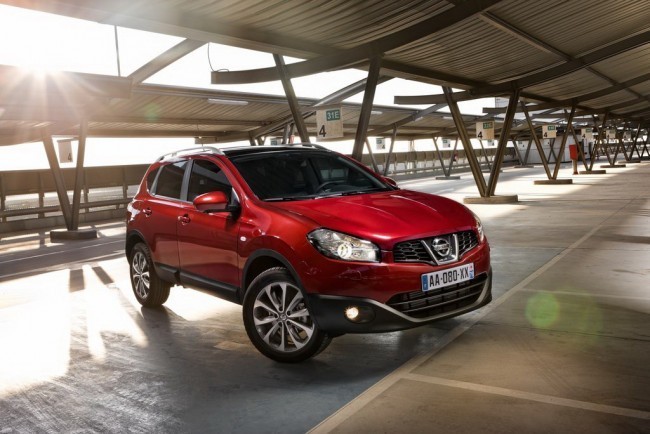Every New Off-Road-Ready Truck and SUV You Can Buy for 2021
Check out the Ram TRX, Land Rover Defender, or the Jeep Gladiator Mojave for over 11 inches of ground clearance.
Trucks and SUVs rule the world. But not all of them can go any place in the world. That’s reserved for true off-roaders. Be it rock crawlers, desert pre-runners, or trail hounds, they all thrive where the pavement ends. Many trucks and SUVs have names that suggest they can go boldly wherever they damn well please, but those are often just appearance packages or trim levels. For instance, the Toyota RAV4 Adventure promises, well, adventure, but it lacks the beef and tools to go far off-road.
Here is Car and Driver‘s list of legit off-roaders available for 2021. These are serious trail-ready beasts with low-range crawler gears that feed all four wheels, suspensions high enough to clear obstacles, and underbody plates that’ll protect the mechanical bits when your rock crawling. The only way to earn a spot on this list is by demonstrating true ability and stalwart ruggedness.
The Toyota’s 4Runner is built for serious work, not just profiling at Target. Every 4Runner is capable, but the four-wheel-drive-only TRD Pro is the beastly one, with an electronic locking rear differential, thick underbody skid plates, 2.5-inch Fox internal-bypass dampers, and specially tuned front springs that help raise the nose by 1.0 inch. New for 2020 is a 8.0-inch touchscreen with Apple CarPlay and Android Auto compatibility atop the center of the dash. There’s also a digital display between the speedometer and tachometer for monitoring the vehicle’s behavior. So now you can crawl off-road while being reassured that you have oil pressure.
Every Toyota Land Cruiser is equipped with a full-time four-wheel-drive system with a Torsen locking center differential, a thumping 381-hp 5.7-liter V-8, skid plates to armor the underbody, and loads of high-tech digital assists for conquering terrain. In addition to its self-leveling suspension, this luxuriously detailed Toyota has the Multi-Terrain Monitor, which provides a near-360-degree view of the truck’s surroundings. It also has what’s called Off-Road Turn Assist that improves turning when using Crawl Control, which is a sort of low-speed adaptive cruise control.
For 2020, even the massive, three-row Toyota Sequoia SUV has been fortified into a TRD Pro. Toyota knows it has a good thing going with these models, and they’re going to push the TRD Pro brand as far as it can. The Sequoia is a brother to the Tundra, so much of the TRD Pro equipment is shared between them. The exterior has been toughened up; the suspension, beefed up with front and rear Fox dampers. It wears 18-inch BBS wheels and all-terrain tires, and the four-wheel-drive system includes a low-range ratio. A Torsen locking center differential helps 401 lb-ft of peak torque from the 5.7-liter V-8 engine to the wheels.
Marty McFly dreamt of owning one. And it’s clear to see why. The Toyota Tacoma TRD Pro features a four-wheel-drive system with an electronically controlled dual-range transfer case and an electronic locking rear differential. The suspension is lifted with TRD-specific springs and 2.5-inch Fox internal-bypass dampers. For 2020, the aggressive, blocky exterior gets a distinctive grille, and the whole thing rides on 16-inch wheels inside Kevlar-reinforced Goodyear Wrangler all-terrain tires. Plus, a slick camera system helps the driver spot obstacles.
Toyota’s Tundra is the company’s biggest truck, and its TRD Pro version has the biggest talent. The TRD Pro’s trail-ready equipment includes a 2.0-inch suspension lift, beefy Fox internal-bypass dampers, and specific front and rear springs. That results in 10.6 inches of ground clearance. It rides on a special set of 18-inch BBS wheels wrapped in Michelin all-terrain tires. Yeah, the TRD Pro has four-wheel drive and thick skid plates to protect vital vehicular vittles.
Power Wagon is a name that dates back to the days just after World War II, when Dodge was repurposing its military trucks for civilian duty. Today’s Power Wagon is based on the Ram 2500 HD, a truck built to get jobs done, not just for looks at the off-road park. The Power Wagon has a lifted suspension for increased ground clearance and greater approach and departure angles. It also adds off-road essentials like locking front and rear differentials and a disconnecting front anti-roll bar. The front-mounted winch can handle up to 12,000 pounds should all Hell break loose. The Power Wagon comes equipped with a 410-hp 6.4-liter gas-fed V-8.
Ram’s 1500 Rebel is the division’s ultimate off-road light-duty full-size truck. While all 1500 4x4s are available with an Off-Road package that includes an electronic locking rear differential, 32-inch tires, skid plates, upgraded dampers, hill-descent control, and more, the Rebel adds styling. The optional height-adjustable four-corner air suspension, a BorgWarner two-speed transfer case with low-range gearing, and a set of 33-inch Goodyear Wrangler DuraTrac tires help even more. Available in Quad Cab or cavernous crew-cab body styles, the Rebel offers engine choices that include a modest 260-hp 3.0-liter diesel, a 305-hp 3.6-liter V-6 with eTorque, and the 395-hp 5.7-liter V-8 with or without the hybrid boost system.
Hold onto your butts, this 702-hp pickup is a supercharged off-roader that can jump high enough to escape Jurassic Park. The Ram 1500 TRX starts at around $72,000, but no matter how it’s optioned, it arrives 3.3-inches taller than the normal Ram 1500. This half-ton Hellcat comes standard with 35-inch tires wrapped around 18-inch wheels, or a beadlock-capable option, that give the TRX 11.8 inches of ground clearance. We hit 60 mph in just 3.7 seconds, making it the quickest truck we’ve ever tested. The TRX can tow up to 8100 pounds (100 more than the F-150 Raptor), and gets an EPA-estimated combined 12 mpg, making it the least fuel-efficient pickup you can buy today. Those wishing to risk it all can option the truck with two 103-pound spare wheel-and-tire assemblies, with one mounted inside the bed.
Between half-ton and three-quarter-ton full-size pickups, Nissan has positioned Titan XD. The most capable off-roader among the Titan XD’s lineup is the Pro-4X. Leveraging the XD’s ladder-frame chassis, the Pro-4x features specifically tuned Bilstein dampers, a two-speed transfer case, an electronic locking rear differential, hill-descent control, and knobby all-terrain tires. The exterior gets a brazen bed-side decal, black tow hooks up front, red accents, and a different grille. The standard engine is the familiar 5.6-liter V-8 rated at 400 horsepower.
If the XD is too much, then there’s the half-ton Nissan Titan Pro-4X, powered by Nissan’s 5.6-liter V-8. The Pro-4X model includes four-wheel drive with a two-speed transfer case, an electronic locking rear differential, Bilstein dampers, hill-descent control, and all-terrain tires. It features better approach, break-over, and departure angles than other Titans, and there are plenty of skid plates that protect the lower radiator, oil pan, transfer case, and fuel tank. The Pro-4X is built to survive, if it’s not quite as robust as the XD.
The Nissan Frontier is old school in many good and some not-good ways. If you’re a tech fiend, forget about it: The Frontier is as technologically advanced as a rock. But the Pro-4X is ready for trail bashing out of the box. The four-wheel-drive Pro-4X has an electronically locking rear differential, all-terrain tires, Bilstein dampers, and hill-descent control. Buyers can pair its new for 2020 310-hp 3.8-liter V-6 with a nine-speed automatic. There’s also a Dana 44 rear axle and 2-speed transfer case with an electronic locking rear differential.
Mercedes has been building the G-class since 1979. And initially, it wasn’t supposed to be sold to civilians, Kardashian or otherwise. It was a military vehicle built to take punishment and be easy to fix. The four-wheel-drive system of today’s G-class is among the most advanced there is, with a trio of locking differentials that can be manipulated to climb mountains. The G-class lost its solid front axle in its redesign, but it offers a respectable 9.5 inches of ground clearance and can wade through 27.6 inches of water. In the U.S., the G-class is offered in two models. There’s the G550 powered by a twin-turbo 4.0-liter V-8 rated at 416 horsepower. That’s no slouch. Still, it’s no AMG G63. That beast is powered by a 577-hp version of the same engine. That’s a boxy rocket ship. Oh yeah, it’s dang expensive, too.
Is Lexus LX really just a redecorated Toyota Land Cruiser with better upholstery? Well, yeah. But so what? The LX570 backs up its flash and plush with all the off-road prowess expected of a Cruiser. It has a full-time four-wheel-drive system that includes a two-speed transfer case and a limited-slip center differential. Also aboard are hill-start assist and terrain-management software. Naturally, Lexus uses a self-leveling air suspension with adaptive dampers and a 383-hp 5.7-liter V-8 mated to an eight-speed automatic transmission. With 8.9 inches of ground clearance and modest approach, break-over, and departure angles, the LX is best used at hauling horse trailers out of the mud rather than trail busting.
Over the past few years, the Lexus GX has earned cachet as a luxury SUV that has real ability. Built like a real truck, with body-on-frame construction, the GX uses a self-leveling suspension with optional adaptive dampers. The full-time four-wheel drive and two-speed transfer case combine for goatlike off-road abilities. And don’t you crave an SUV that’s comparable with a goat? Power comes from a 4.6-liter V-8 rated at 301 horsepower. Those features are joined by low-range gearing, a limited-slip center differential, hill-descent control, active traction control, and available crawl control. That last one helps the GX maintain low speeds in forward or reverse while traversing uneven surfaces and challenging obstacles.
Here’s the lowdown: When the Queen of England needs to get some place, she’s usually riding in a Range Rover. But luxury means nothing if it’s not backed up with ability. Every Range Rover has an adaptive all-wheel-drive system and adjustable air suspension, which help it conquer harsh conditions. It also has a two-speed transfer case, electronically locking differentials, hill-descent control, and a low-traction launch-control setting. And it will look good doing it. The Range Rover is available in two wheelbases and a mind-boggling range of trim levels with stand-alone options. If you’re royalty, this is what you drive—anywhere you damned well please.
Land Rover’s Discovery is the model they use to make a stylistic statement. The weirdness goes away once the Discovery heads off road, and its sophisticated all-wheel-drive system can show off its talents. An available air suspension provides up to 11.1 inches of ground clearance with generous approach and departure angles. The Disco can also swim in up to 35.4 inches of water. Land Rover’s advanced terrain-management system monitors road conditions and includes customizable settings. There are two engines available. A 3.0-liter turbodiesel V-6 rated at 254 horsepower and a thumping 443 lb-ft of torque. The gasoline option is a supercharged 3.0-liter V-6 that knocks out 340 horses.
The Discovery Sport is as close to being affordable as any Land Rover. And like the over Rovers, it combines luxury with off-road ability. It’s not the company’s most rugged product, but the Disco Sport has the ability to wade into water more than 23 inches deep. It also has an approach angle of up to 23.4 inches and a departure angle of 31 inches. Its standard all-wheel-drive system pairs with selectable drive modes that include settings for gravel, snow, mud, and sand. The ability to scale slopes up to 45 degrees along with gradient-release and hill-descent control are helpful, too. Discovery Sport models are available with a 2.0-liter turbocharged gas four rated at 246 horsepower. But the Discovery Sport R-Dynamic range topper can be had with a 286-hp version of the same powerplant.
The all-new second-generation 2020 Land Rover Defender is here at last. Much like the Jeep Wrangler, the Defender will be offered as a two-door known as the 90 and a four-door called the 110. For now, only the 110 is available in the United States. The base 110 can be had with either a 296-hp, 2.0-liter turbo four or a 395-hp 3.0-liter inline six. In case of emergency, the Defender has a maximum towing capacity of 8201 pounds. Unlike its namesake, the new Defender is a unibody design with fully independent suspension. In the truck’s highest setting, 11.5 inches of ground clearance matching the Sasquatch trim Ford Bronco, and 0.7 inch more than a Jeep Wrangler Rubicon. Like the photo above suggests, Land Rover tells us the 110 can go through water as high as 35.4 inches before you should drop anchor and turn around.
The new 2020 Jeep Gladiator builds on the four-door Wrangler’s successful, appealing formula by adding a pickup bed to its tail. That also means a stretched wheelbase that seriously improves the everyday ride quality. It’s the easiest Wrangler derivative to use and drive, and that made it a member of C/D‘s 2020 10Best list. Like a proper Wrangler, the roof and doors can be removed. An optional disconnecting front anti-roll bar increases axle articulation over uneven terrain, and substantial 33-inch BFGoodrich KM all-terrain tires (optional) look cool and help with traction. Various trims are available up to the Rubicon model, ready to overwhelm most any mountain. The base engine is a 285-hp 3.6-liter V-6 with a six-speed manual transmission, but Jeep recently added a 260-hp 3.0-liter turbodiesel with an eight-speed auto. Gladiator Rubicon and Mojave both offer over 11 inches of ground clearance.
This is what a Jeep is supposed to look like. Tracing its lineage back through all the CJ models to the first military MB, here is the Jeep Wrangler. Familiar looks go with brilliant performance straight out of the box. Every model has four-wheel drive and two solid axles, its two- and four-door body styles can easily be stripped down, leaving them doorless and/or topless for unrivaled exploration exposure. The Jeep provides 10.9 inches of ground clearance, an approach angle of 44 degrees, and a departure angle of 37 degrees. Its front and rear axles can be fitted with locking differentials and share a two-speed transfer case with low-range gear ratios for optimal crawling capability and traction. A disconnecting front anti-roll bar and beefy 33-inch BFGoodrich KM all-terrain tires are included on the hardest-core Rubicon trim.
The Grand Cherokee Trailhawk is a legit off-roader. There’s standard air-spring suspension that can be lifted at the push of a button to provide up to 10.8 inches of ground clearance. It also features a trick all-wheel-drive system with a two-speed transfer case and an electronic limited-slip rear differential. The Trailhawk’s many selectable traction-control settings are hill-ascent and hill-descent modes that help to manage speed on angled surfaces. For 2020, changes are scant. There’s a single-pane sunroof and some trim changes. The standard powerplant is the familiar 285-hp, 3.6-liter V-6 with the 360-hp, 5.7-liter version of the Hemi V-8 optional.
Though it has a unitary body and a transverse-mounted engine, the Jeep Cherokee in Trailhawk trim is actually dang good off-pavement. The Trailhawk uses the company’s most advanced all-wheel-drive system (called Active Drive Lock) that supports a rear mechanical locking differential and a low 51.2:1 crawl ratio. This equipment combines with a selectable traction-control system that includes Rock mode and hill-descent control. The off-road suspension provides 8.7 inches of ground clearance and greater approach and departure angles than other Cherokees. The standard engine is 3.2-liter V-6 lashed to a nine-speed automatic transaxle. A 2.0-liter turbocharged four is a $500 option.
Under the right circumstances, the subcompact Jeep Compass in Trailhawk guise can be an effective off-road warrior. The Trailhawk features enhanced all-wheel-drive system and an exclusive 20:1 crawl ratio, while the suspension is modified for additional ground clearance and a better approach angle than ordinary Compass models. The Trailhawk’s selectable traction-control software includes a Rock mode to help wrestle with the tough stuff. This Compass wears special badges and decals, bright-red tow hooks, and aggressive 17-inch wheels wrapped with Falken all-season tires.
It’s petite and made in Italy, but the Jeep Renegade in Trailhawk trim can be very effective off-road. Any Renegade can be equipped with all-wheel drive, but only the Trailhawk version features a low 21:1 crawl ratio and Rock mode via its selectable traction-control system. A standard locking differential and a four-lo setting that locks the front and rear driveshafts help this baby Jeep conquer treacherous terrain. It also boasts underbody protection, 8.7 inches of ground clearance, and a water-fording depth of up to 19 inches. A 180-hp 2.4-liter four is standard with a 177-hp 1.3-liter turbo four optional.
GMC’s HD Sierra line is built to undertake mighty tasks such as towing toy haulers the size of a house. But the All Terrain X package provides some trail-crawling credentials, too. The Off-Road Suspension package uses twin-tube shocks, hill-descent control, transfer-case protection, and a set of aggressively treaded Goodyear Wrangler DuraTrac tires. The bed-mounted roll bars are a bit tacky, but the front skid plate and trailer-tow mirrors are plenty useful. Available on four-wheel-drive SLT models, the All-Terrain X equipment goes well with either the standard 360-hp 6.0-liter V-8 or the almighty Duramax diesel 6.6-liter V-8 that thunders with 910 lb-ft of torque.
The GMC Sierra 1500’s AT4 trim is step up in ability from the less expensive X31 Off-Road package available on other Sierras. Both come with a rear electronic-locking differential, Rancho monotube shocks, hill-descent control, a two-speed transfer case, and lots of skid plates, but only the AT4 has the 2.0-inch suspension lift. That’s worth a few shekels. Beyond that, it is available with an Off-Road drive mode that is designed for higher-speed travel on unpaved surfaces. For 2020, there’s an AT4 CarbonPro Edition with a CarbonPro composite bed, a black chrome finish grille surround, special badging, black dual exhaust tips, and 18-inch wheels with Goodyear DuraTrac tires. The AT4 trim can be had with the top-dog 420-hp 6.2-liter V-8.
For extreme off-road use in a mid-size truck, the General Motors product that rocks is the Chevrolet Colorado ZR2. But here’s the GMC Canyon, the Colorado’s near-twin brother, and new for 2021 is this husky AT4 package that replaces last year’s Canyon All Terrain. The AT4 comes standard with an off-road suspension, front skid plate, and 31-inch Goodyear Wrangler DuraTrac tires. There’s also a rear electronic locking limited slip differential and a different looking front bumper to give it that special look. Red tow hooks will come in handy if you find yourself between a rock and a hard place. The standard powertrain is a 308-hp 3.6-liter V-6 with a eight-speed automatic, but an optional 181-hp turbodiesel with a six-speed auto is also available. The AT4 can be built as an extended cab with the six-foot box, or as a crew cab with either the six- or five foot box. Max towing capacity is 7000 lbs. There’s also a GMC Acadia AT4, but its mostly cosmetic changes that don’t improve capability.
The Ford F-series Super Duty is typically spotted towing, but off-road trails don’t discriminate. Beyond the usual four-wheel-drive system, the FX4 Off-Road package adds underbody protection and specially tuned shocks. The skid plates cover the two-speed transfer case and fuel tank, while all-terrain tires, hill-descent control, and a rear electronic-locking differential manage speed traction off the beaten path. For 2020 a Tremor off-road packaged was added with a lifted suspension enabling 10.8 inches of ground clearance. To that the Tremor package adds skid plates and 35-inch all-terrain tires. Nicknamed Godzilla, the all-new pushrod V-8 is an enormous 430 horsepower 7.3-liter with 475 lb-ft of torque with a 10-speed automatic transmission. For towing, the 7.3-liter can muster 15,000 pounds off its bumper and up to 20,200 with a gooseneck hitch. While well short of the massive 37,000-pound maximum a diesel F-450 can lug, the diesel is a $10,495 upcharge. The 7.3 is a relatively reasonable $1705 premium.
In its most natural from, the Ford Ranger comes with 270-hp turbocharged four-cylinder with a 10-speed automatic, in either an extended cab or crew cab style. Ford didn’t stop there, as they’ve added three dealer-installed Ford Performance off-road accessory packages that include an off-road tuned Fox suspension, 17-inch Dyno Gray wheels, and Ford Performance decals on the windshield and rear fenders. These packages pickup where the Ranger FX4 left off. The FX4 gives the Ranger FX4 tweaks the suspension, adds off-road tires, skid plates, a locking rear differential, Trail Control and Ford’s Terrain Management System. Get a little dirtier with the Level 1 package for $2495 before installation, the Level 2 costs $4495, and the fully loaded Level 3 costs $8,995.
The Ford Raptor is more than an amazingly capable off-road truck. It’s a cultural icon, a prestige product, and a total badass. It’s not built to squeeze through trails, but it gobbles up open desert at high speed and even jumps sand dunes. There are jumping limits, however. See YouTube. It is a Baja racer in spirit, with an aggressive wide-body appearance, a 450-hp twin-turbo V-6, and a long-travel suspension. With a terrain-management system and fancy Fox internal-bypass dampers, the Raptor is ready for a variety of flight patterns, while its standard 34-inch BFGoodrich All-Terrain T/A KO2 tires are available with beadlock wheels. A rear electronic-locking differential with 4.10 gears is standard, and a Torsen limited-slip front differential with 4.10 gears is optional. The Raptor is radical.
Sometimes off-roading is more about the ambiance than the challenge. The Ford Expedition, for example, is the only one on this list with 15 cupholders. The FX4 trim also includes upgraded front and rear dampers, an electronic limited-slip differential with a 3.73:1 rear-axle ratio, a heavy-duty engine radiator, and a two-speed transfer case. It’s powered by a 375-hp 3.5-liter twin-turbo V-6 with a 10-speed automatic transmission. There are, of course, FX4 badges, as well as running boards (take them off) and 18-inch wheels wrapped in all-terrain tires. Underneath, skid plates protect the fuel tank and other vital components from hard objects.
Your prayers have been answered; the Ford Bronco is back in a big way. It’s offered in two- or four-door layouts, with a new 7-speed manual transmission, optional 35-inch tires, a removable top and doors, and an infotainment that can download trail maps and navigate them without any WiFi or cell service. The body-mounted mirrors mean taking the doors off won’t cost you much, and a pull-out table is also an option for the rear area. A 270-hp 2.3-liter EcoBoost four-cylinder or a 2.7-liter EcoBoost V-6 with a claimed 310 horsepower. There’s no V-8 option, just turbos. Both body styles have a 3500-lb towing capacity. Ford is currently taking $100 refundable deposits, and the Ford Bronco is expected to go on sale Spring 2021.
Think of the Ford Bronco Sport as an easier going off-roader than the bulkier Bronco. It shares the same powertrain as the Ford Escape, a turbocharged 1.5-liter three-cylinder with 181 horsepower while a 245-hp turbo 2.0-liter four-cylinder is optional. An eight-speed automatic transmission and all-wheel drive are standard. Higher trims offer a a more sophisticated AWD system with a twin-clutch torque-vectoring rear differential as well as a beefier suspension. Ground clearance measures 7.8 inches for the base model and 8.8 inches for the Badlands trim. Max towing capacity is 2200 lbs with the optional 2.0-liter and for folks truly after going off the grid with a Bronco Sport, the optional rubberized flooring might be a good idea. Ford is taking preorders now, but they should be available later this year at dealerships.
The new generation Chevy Suburban is here, and it’s a giant way to get dirty. The Z71 trim starts at around $63,000, and is powered by a 355-hp V-8 mated to a 10-speed automatic transmission. Regretfully the 3.0-liter Duramax Diesel offered on every other Suburban, is off limits for Z71. It’s easy to tell the Z71 apart from other trims, thanks to its red recovery loops and a skid plate that pokes out from under the special front bumper cover. The front bumper has a higher approach angle than other trims to help with climbing over stuff. A two-speed transfer case provides traditional four-wheel drive, and it also comes standard with 20-inch wheels with all-terrain tires. The Z71 has an optional air suspension that allows an additional two inches of ride height while in 4LO in case you find yourself between a rock and a hard place.
Just like the ‘Burban, the new Chevy Tahoe is here, and offers the same things its big brother has in Z71 guise. A 355-hp V-8 and 10-speed automatic transmission is the only power option here, which is plenty of giddy-up to get you around the ranch. The Tahoe also has a revised front bumper that shows off its skid plate and recovery hoops. A two-speed transfer case and four-wheel drive is standard with 20-inch wheels wrapped in all-terrain tires. The Tahoe Z71 has an optional air suspension that allows an additional two inches of ride height while in 4LO. Chevy also offers a $1499 Napier roof-top tent from their accessory catalog for both the Tahoe and the Suburban for all you happy campers out.
The heavy-duty Chevy Silverado variants are capable of more than just towing a farm’s worth of hay and attending Future Farmers of America meetings, especially when equipped with the Z71 Off-Road package. Available exclusively with four-wheel drive, this setup is similar to that on the light-duty 1500 and brings a beefy front anti-roll bar and skid-plate protection for the two-speed transfer case. A set of twin-tube dampers enhances the suspension, and hill-descent control is added to help regulate downhill speed on steep slopes. Of course, the 2500/3500HD Z71 models’ exteriors are emblazoned with Z71 badging, and 17- or 18-inch wheels wrapped with all-terrain tires are offered. This package can be paired with the standard 360-hp 6.0-liter V-8 or the thunderous 6.6-liter Duramax diesel V-8 that makes 910 lb-ft of torque.
Beyond the normal Chevrolet Silverado 1500 Z71 lies the Trail Boss. It takes the Z71 and exaggerates it. The Z71 already includes an automatic-locking rear differential, upgraded suspension with Rancho shocks, a two-speed transfer case, hill-descent control, and protective skid plates. The Trail Boss stacks atop that equipment a 2.0-inch suspension lift for more ground clearance and increased approach and departure angles, as well as a set of black-painted 18-inch wheels wrapped with 32-inch Goodyear Wrangler DuraTrac tires. The Trail Boss is available with the 285-hp, 4.3-liter V-6, the 355-hp 5.3-liter V-8, and for 2020 is now offered with the 420-hp, 6.2-liter small-block V-8 paired with a 10-speed automatic transmission.
The ZR2 version of the mid-size Chevy Colorado looks beefier than other Colorados and has serious modifications to back up its appearance. Chevrolet widened the truck’s front and rear tracks by 3.5 inches and fitted meaty 31-inch Goodyear Wrangler DuraTrac tires. Front and rear electronic-locking differentials help manage traction from the standard 3.6-liter V-6 or the optional 2.8-liter diesel four-cylinder. The suspension is lifted 2.0 inches and uses Multimatic remote-reservoir shocks, while skid plates protect key underbody components. Even beefier is the ZR2 Bison, which adds tougher bumpers, a winch, skid plates, and a snorkel from AEV.
Источник
